Facts about Georgia! The country of Georgia is becoming an increasingly popular tourist destination every year. Yet many people still know relatively little about this beautiful country in the Caucasus. We travelled to Georgia at the end of 2024 and took a road trip through the country. Now we have collected 30 interesting facts that you (maybe) didn't know about Georgia.
Table of contents
Facts about Georgia
Georgians call their country 'Sakartvelo'. Here you'll find the capital Tbilisi, majestic peaks, breathtaking views, medieval monasteries, historic wine regions and friendly people. The country offers great variety - from ski resorts in the north to a subtropical climate with palm trees on the Black Sea.
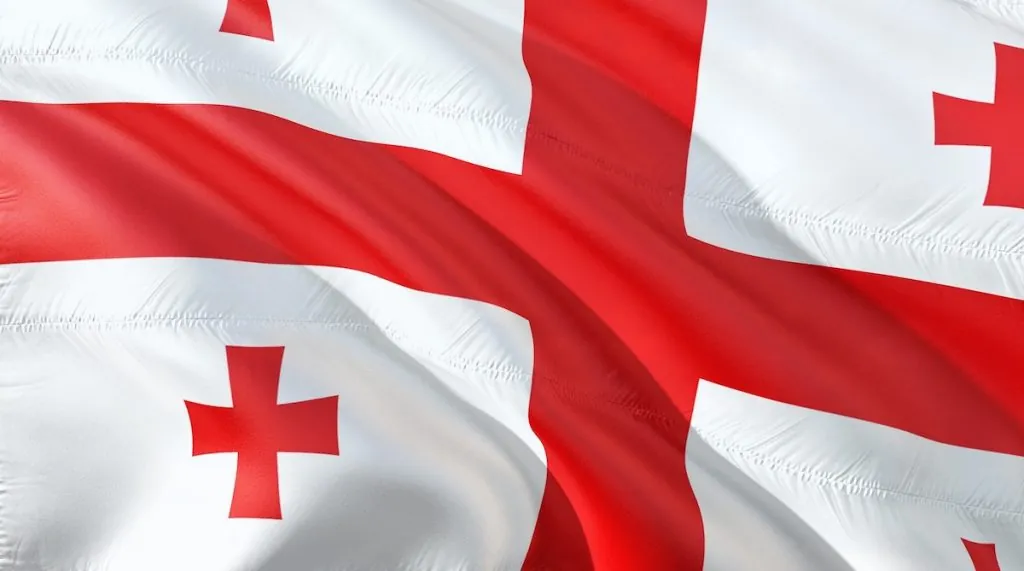
Is Georgia in Asia or Europe?
Georgia is located in the Caucasus, bordering Turkey, Armenia, Azerbaijan and Russia. Geographically, the country lies on the border between Asia and Europe, but for historical and political reasons it is usually considered part of Eastern Europe.
Some quick facts about Georgia
- Georgia is an independent republic with a president.
- Georgia has been invaded several times throughout history, annexed by the Russian Empire and absorbed by the Soviet Union.
- The capital Tblisi was burnt down three times by Genghis Khan.
- Mtskheta was the capital of the historical Kingdom of Kartli from the 3rd century BC to the 5th century AD.
- You can ski in Gudauri in the Caucasus, where the highest lift takes you up to 3279 metres above sea level.
- The Silk Road, which had been trading for around 2000 years, passed through Georgia.
- Weightlifting and wrestling are two of the most popular sports in Georgia. Also rugby where they are ranked number 11 in the world.
- If you talk to a Georgian man, there's a good chance his name is Giorgi, in honour of St George, the patron saint.
- The Georgian Lari is the official currency of Georgia and is abbreviated GEL.
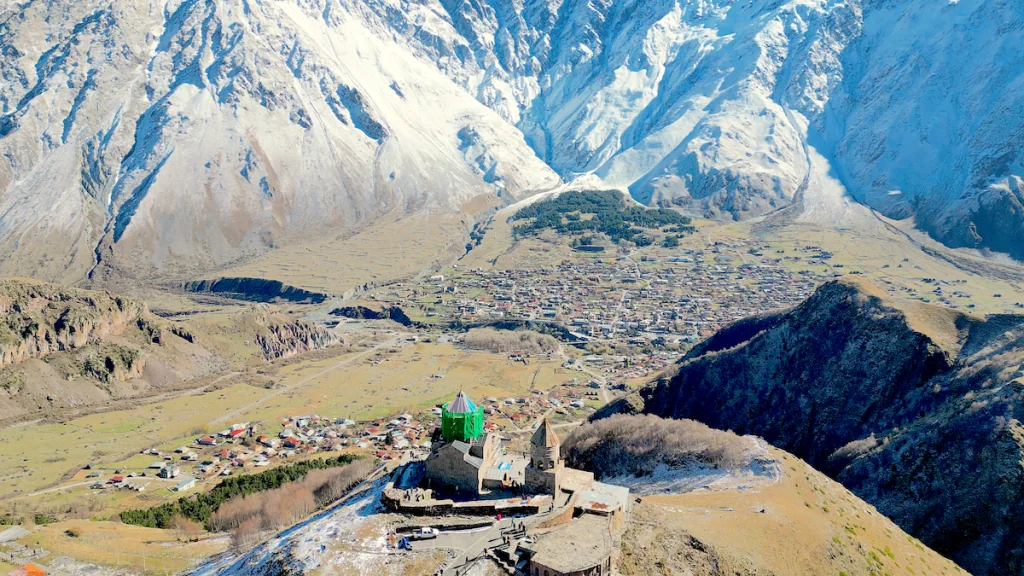
1. Georgia is an Orthodox country
Georgia was one of the first countries to adopt Christianity, which became the state religion in 337. Orthodox Christians celebrate both Easter and Christmas, but in different ways compared to other Christian religions. For example, both feasts are celebrated about two weeks later than in Protestantism and Catholicism.
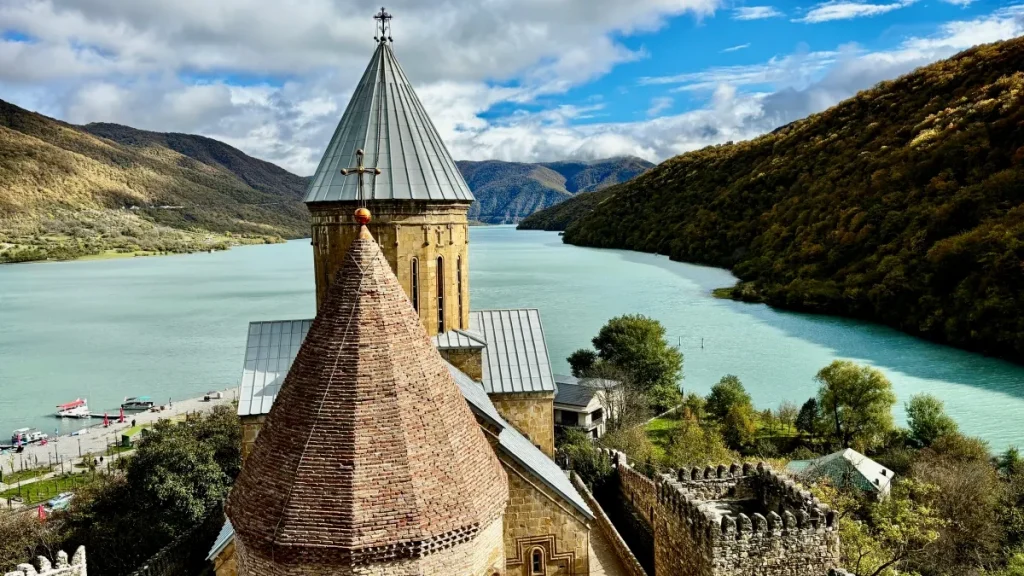
2. In Uplistikhe there is a cave city
Uplistsikhe, which literally means "Fortress of the Lord", was once home to around 20,000 inhabitants. This impressive cave city in eastern Georgia, about ten kilometres east of Gori, is one of the country's oldest urban settlements.
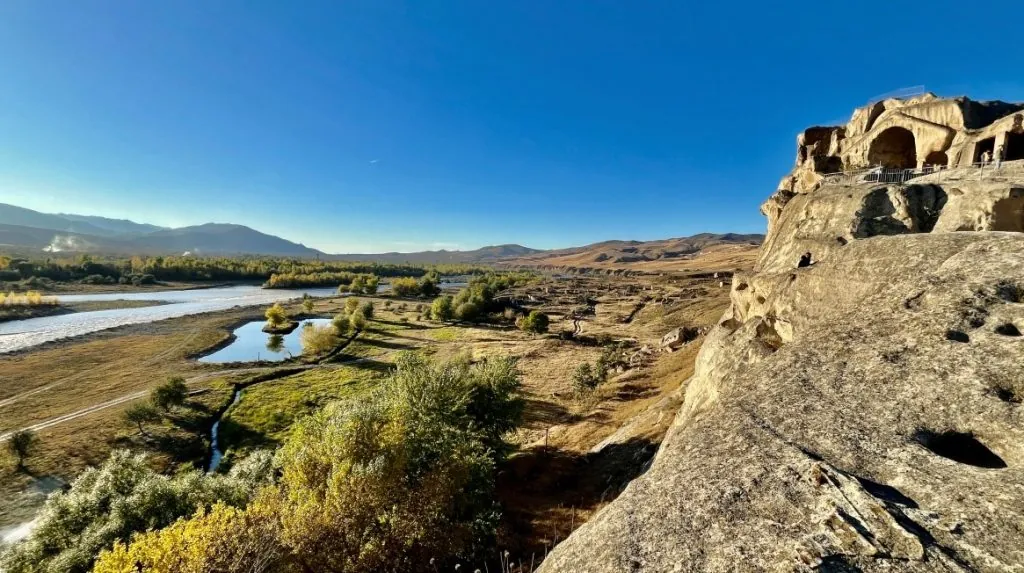
Although Uplistsikhe is not yet an official UNESCO World Heritage Site, it is on the tentative list, which means that it is nominated for future recognition. The town was inhabited from the Early Iron Age to the Late Middle Ages and was strategically located in the ancient Kingdom of Kartli.
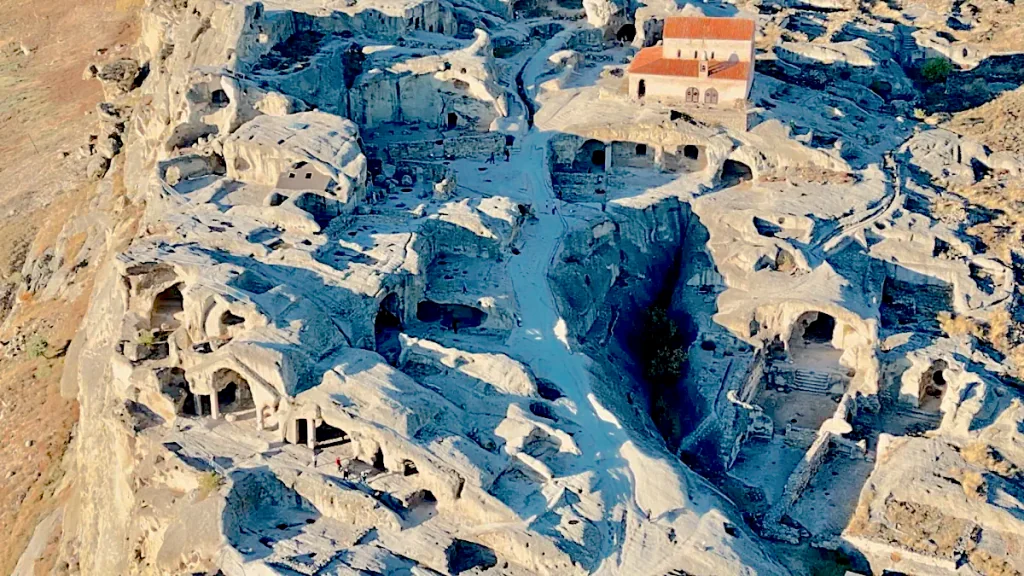
3. Georgia has the Caucasus mountain range
Mount Kazbek, also known as Kazbegi or Mkinvartsveri, is Georgia's third highest mountain and the eighth highest in the Caucasus. The surrounding landscape is at an altitude of around 1 800 metres, while the summit reaches up to approximately 5 054 metres.
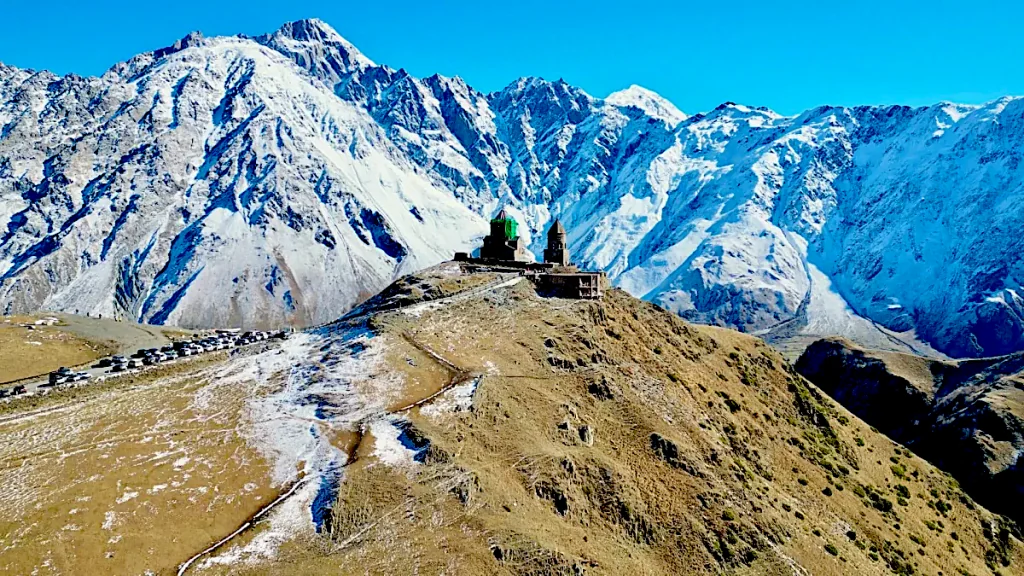
Kazbek is particularly famous from Greek mythology, where it is said to be the place where Prometheus was chained as punishment for giving fire to humans. An eagle constantly pecked out his liver, but according to legend, he was freed by Heracles, who shot down the eagle with his arrow.
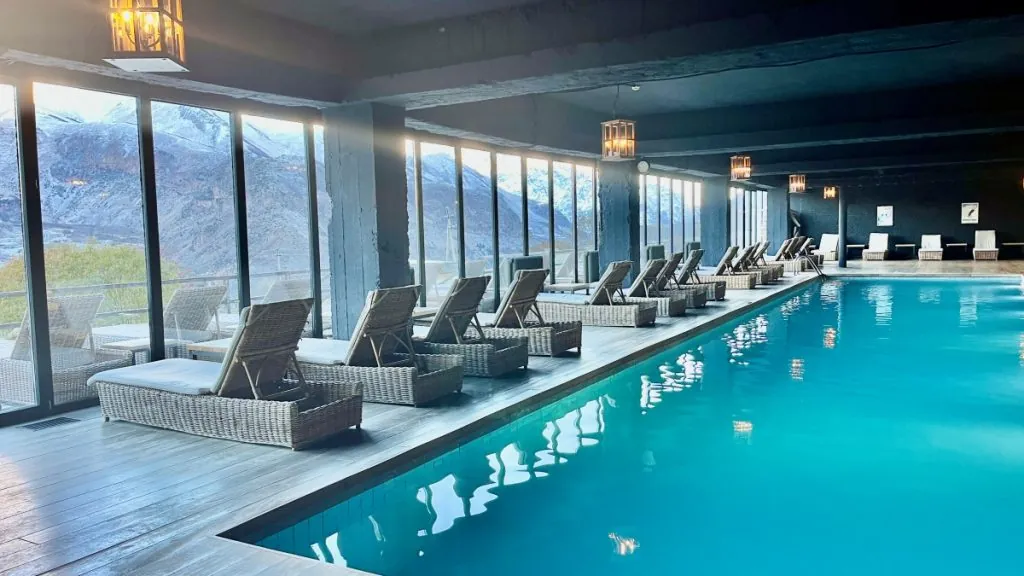
4. there are over 500 different grape varieties in Georgia
There are over 500 different grape varieties in Georgia. This represents almost a quarter of the world's grape varieties, including endangered vines found nowhere else on earth but in Georgia.
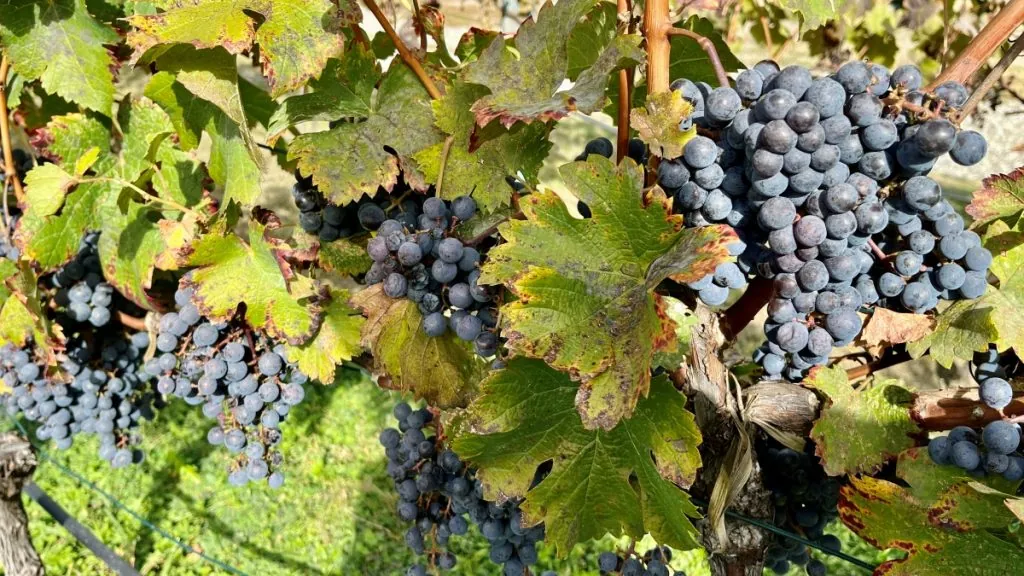
6. The first Europeans probably lived in Georgia
The first Europeans probably lived in Georgia. This hypothesis is confirmed by archaeological findings in eastern Georgia, where the oldest remains of Europeans were found. The people are called Homo Georgicus. The oldest human skulls in the Caucasus, belonging to a 1.8 million-year-old pair, were found during an archaeological expedition in Dmanisi. They are seen as an important link between African and European ancestors.
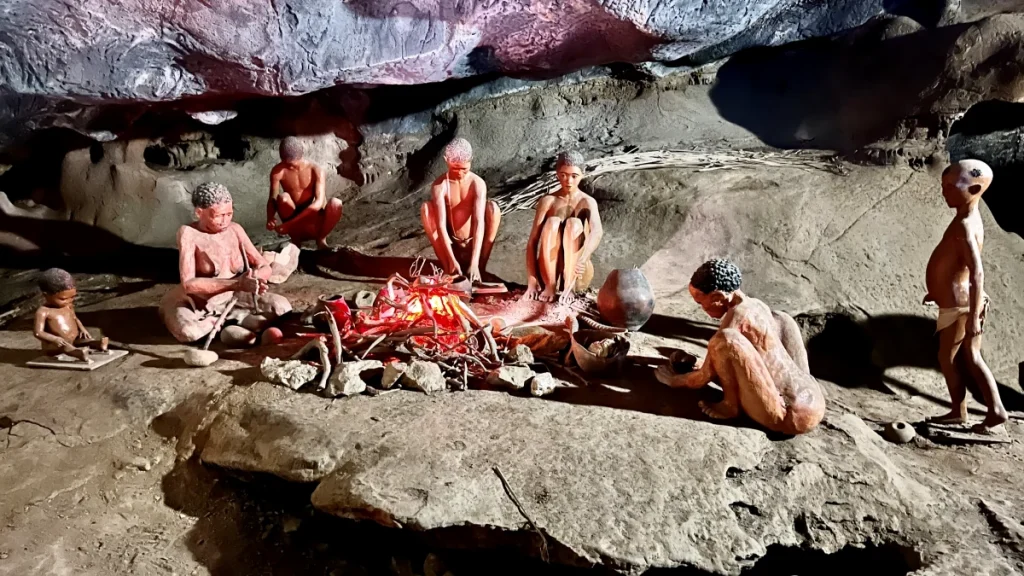
Facts about Georgia
7. Mtscheta was the old capital
Mtscheta is today a small town of around 7 000 inhabitants, but its historical importance is immense. It was once the capital of the ancient kingdom of Kartli and the place where Christianity was proclaimed the official religion of Georgia back in the 3rd century.
As one of the oldest cities in the country, Mtscheta is home to several historical monuments, including the magnificent 11th-century Svetitskhoveli Cathedral. The city's rich cultural heritage has earned its historic buildings a place on the UNESCO World Heritage List.
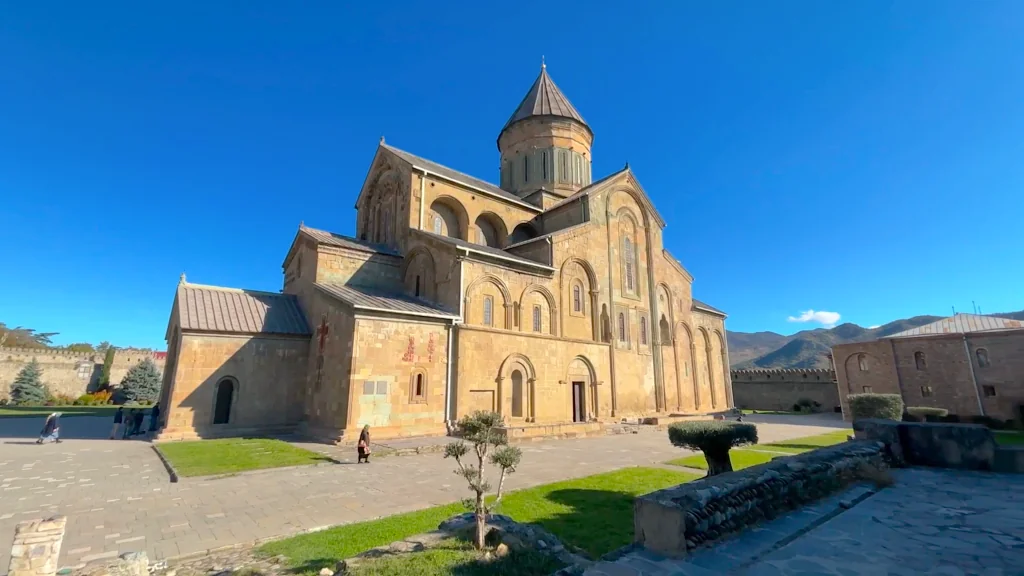
In Mtscheta you can also visit the Jvari Monastery, still considered the holiest place in Georgia. The monastery overlooks the city and the impressive meeting of the Aragvi and Mtkvari rivers.
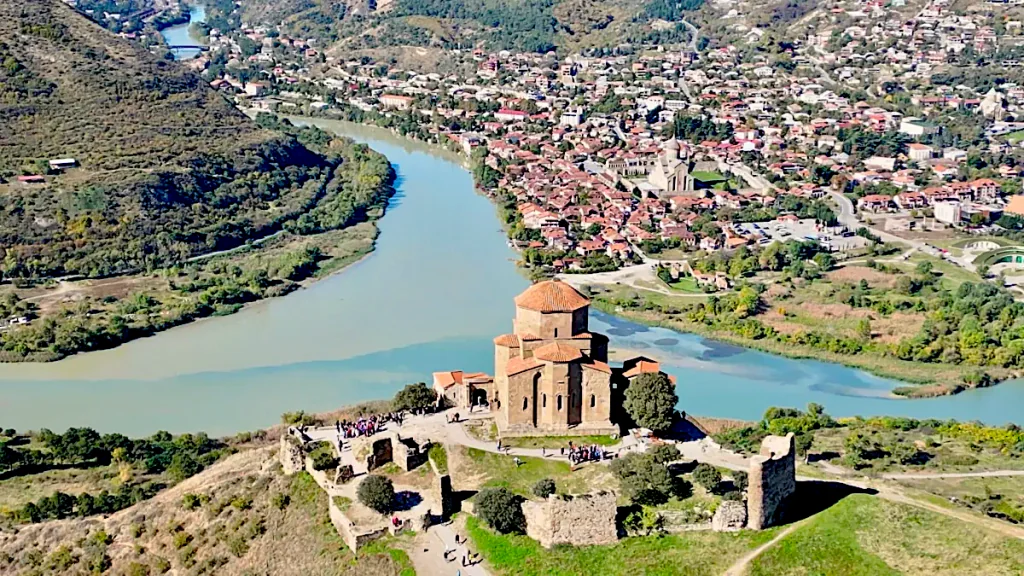
8. Facts about the capital Tblisi that you might not know?
- In the centre Tbilisi there is a leaning bell tower, which twice a day plays a mini puppet theatre coming out of the tower.
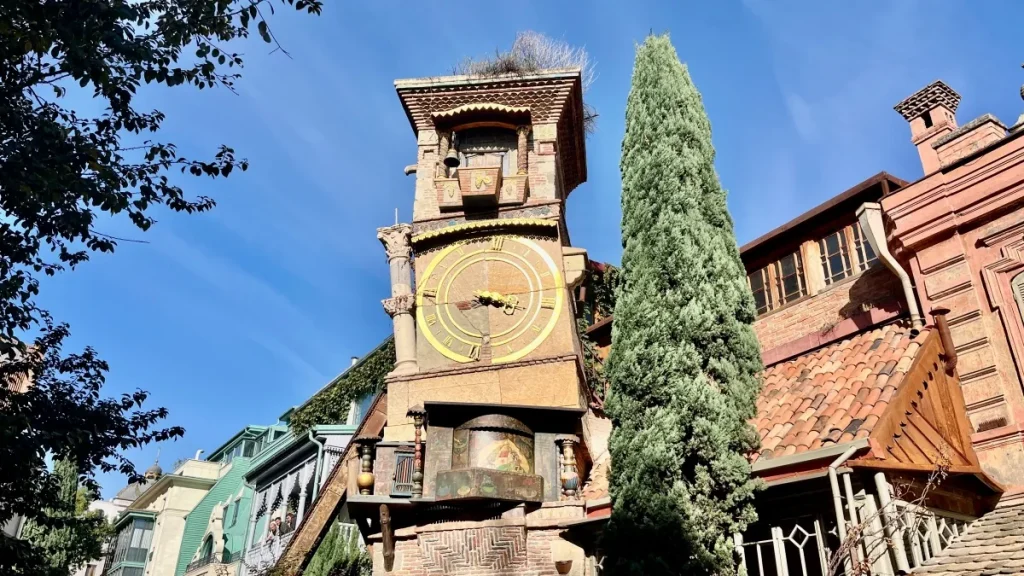
- Tblisi means hot after the hot springs in the capital.
- Tblisi has three cable cars and a fourth one will be operational in 2025.
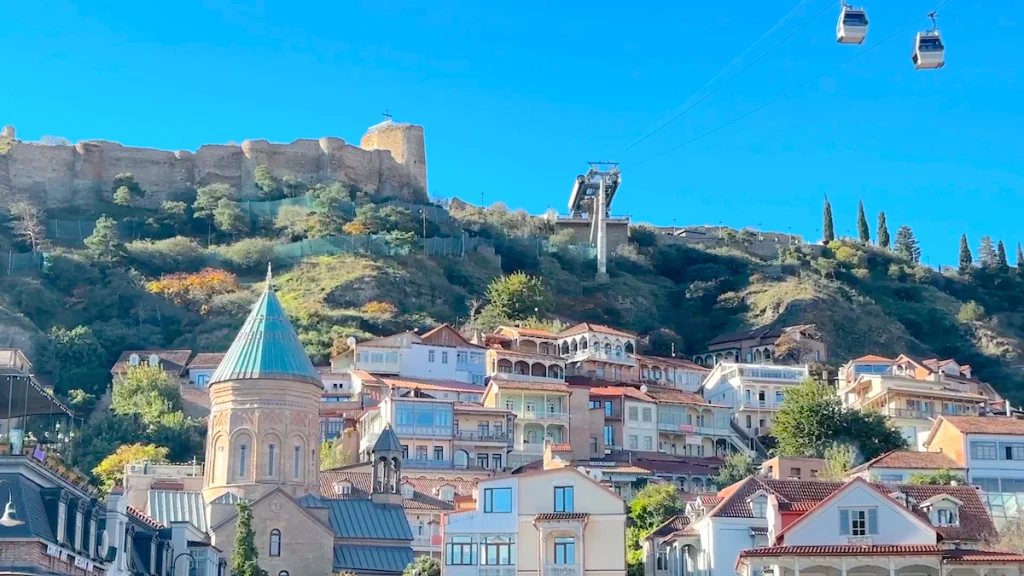
- Here you will find the metro, which was completed in 1966.
- In the city, there is a spectacular Peace Bridge that crosses the Mtkvari River.
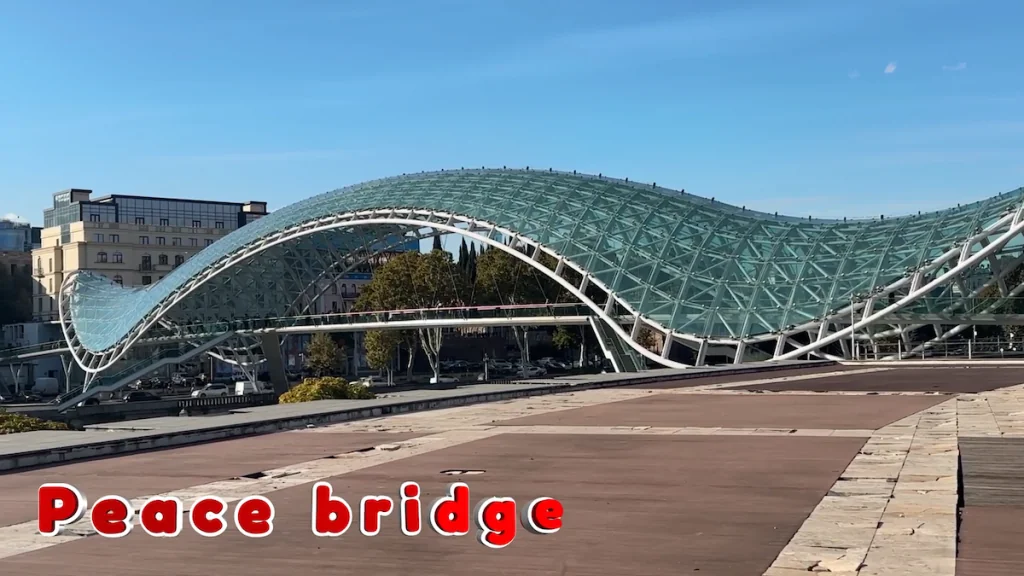
- In the centre of the capital, on a mountain, you'll find a 20-metre high statue of the Georgian mother Kartlis Deda. In one arm she carries a bowl of wine to welcome her friends and the other a sword to warn her enemies.
- Several restaurants have traditional Georgian folk dancing in the evenings for your dinner. A great entertainment, but book in time!
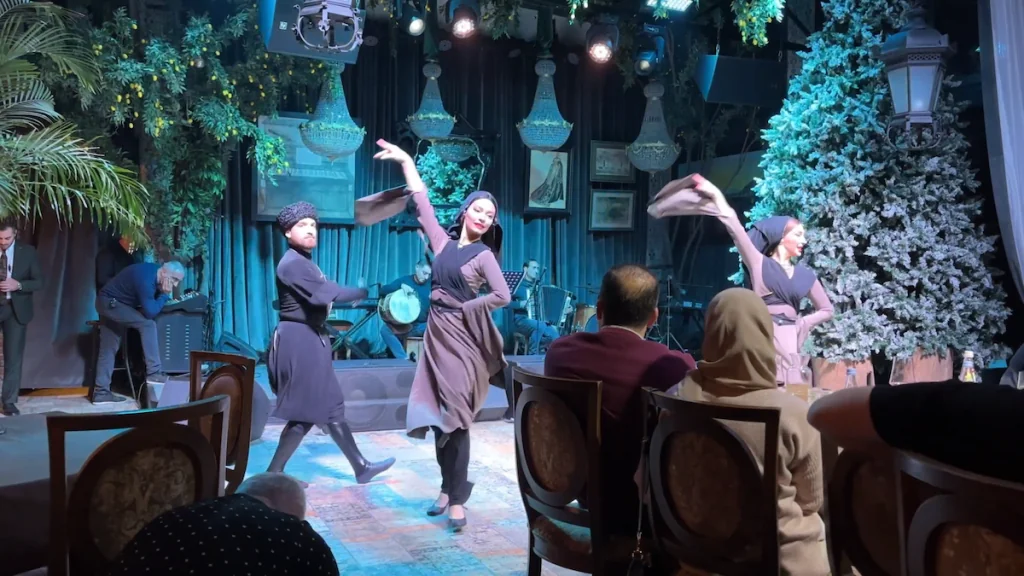
9. Georger celebrates two New Years
There are two New Year's Eves in Georgia. Georgians celebrate the New Year on 31 December, along with much of the rest of the world. They also celebrate the Orthodox 'Old' New Year, which falls on 14 January, after Orthodox Christmas.

10. The world's deepest cave is in Georgia
The Verkhovkina Cave in Abkhazia, Georgia, is the deepest cave in the world. It is also known as the underground Everest. So far, scientists have measured a depth of 2212 metres, but it is believed that the cave is even deeper. The entrance to the cave is through a vertical shaft only 1 metre wide and 60 metres deep. At a depth of 1710 metres, there are underground waterfalls, lakes and a large hall.
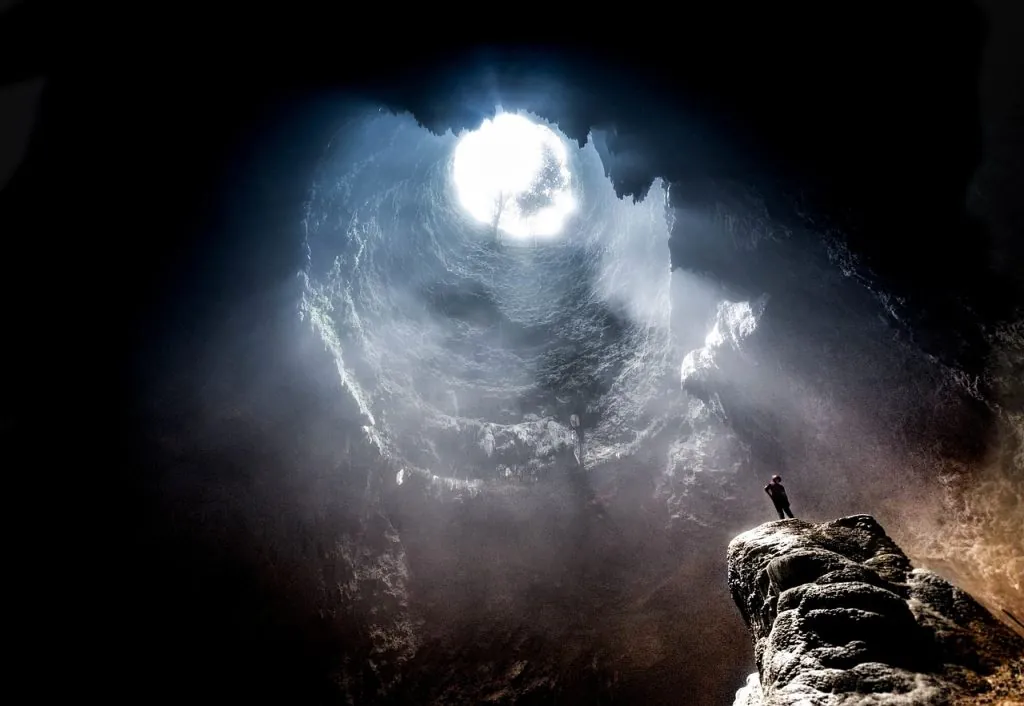
11. Georgia has three mountain peaks above 5000 metres
The highest mountain in the Alps is Mont Blanc at 4804 metres, and there are no mountains higher than 5000 metres in Switzerland, Austria, France or Italy. There are three peaks of five thousand metres in Georgia. With an altitude of 5203 metres, Shkhara is the highest peak in Georgia, followed by Dzjanga with an altitude of 5058 metres. Both mountains are located in Svaneti. The third, with 5047 metres, is the peak of Mount Kazbek.
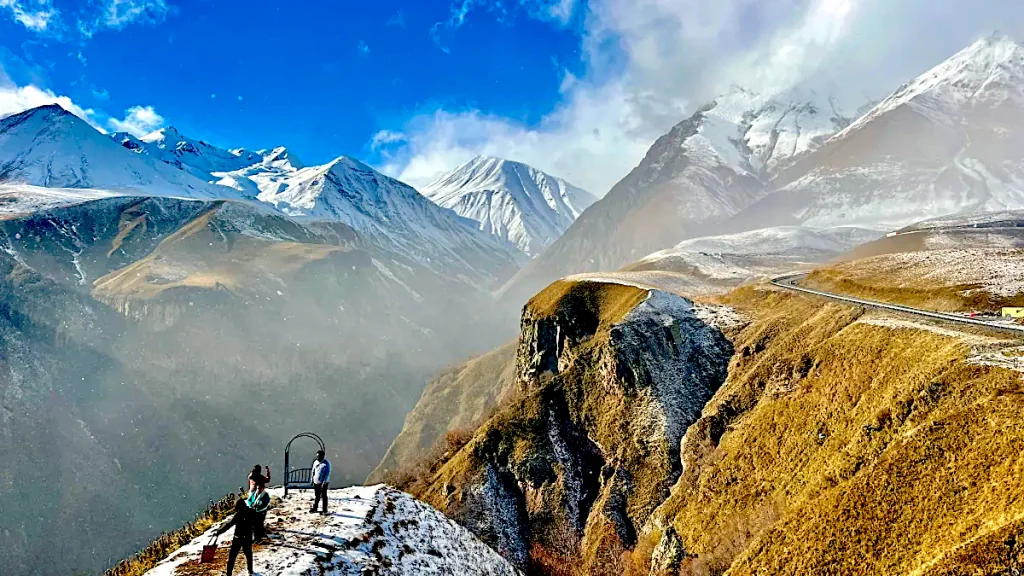
12. The highest villages in Europe are in Georgia
Georgia is home to the highest permanently populated village in Europe, located at an altitude of 2 345 metres. This is the village of Tusheti, located at the foot of Mount Shkhara in the Caucasus mountain range. We visited the mountain village of Juta in Kasbegi in northern Georgia, located at an altitude of 2,200 metres.
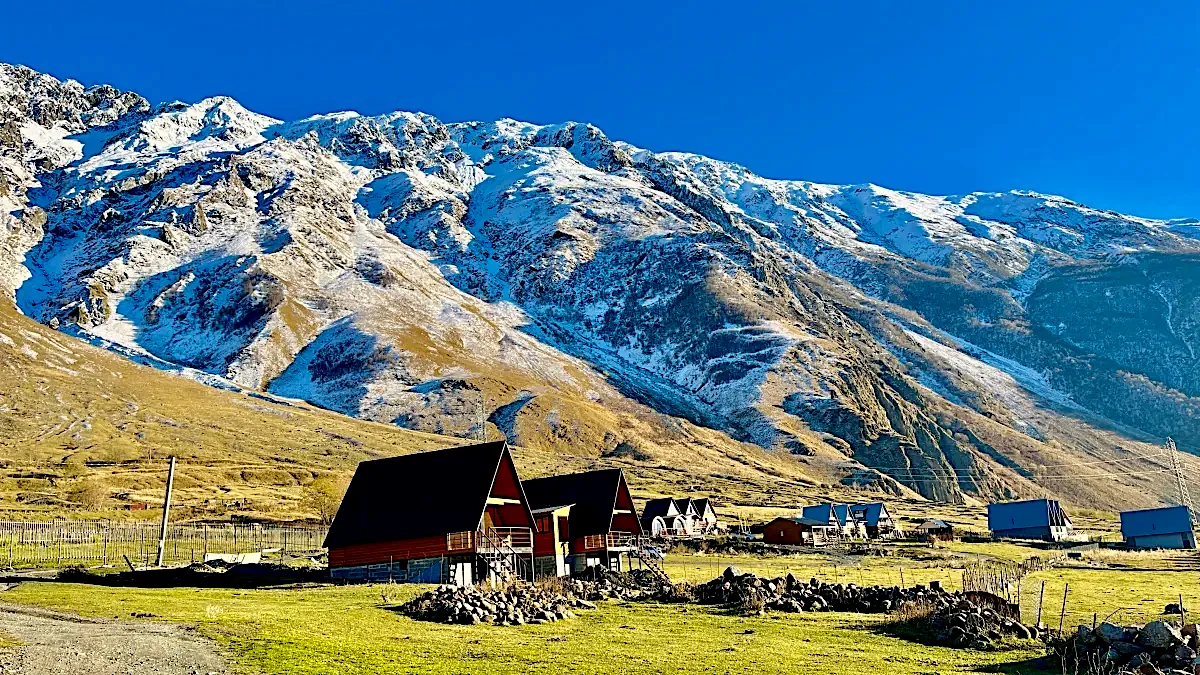
13. In the CITY OF SIGHNAGHI you will find fortress walls and many towers
It is not as long as the Chinese one, but it is also very old and very picturesque. Sighnaghi, the pearl of Kakhetia, is 110 kilometres from Tbilisi. The town is surrounded by a four-kilometre-long fortress wall with 23 towers and six gates, built in the 1770s. Interestingly, each tower of the fortress was named after the nearest village, so that the locals could hide in case of danger. Sighnaghi is also called the "City of love"
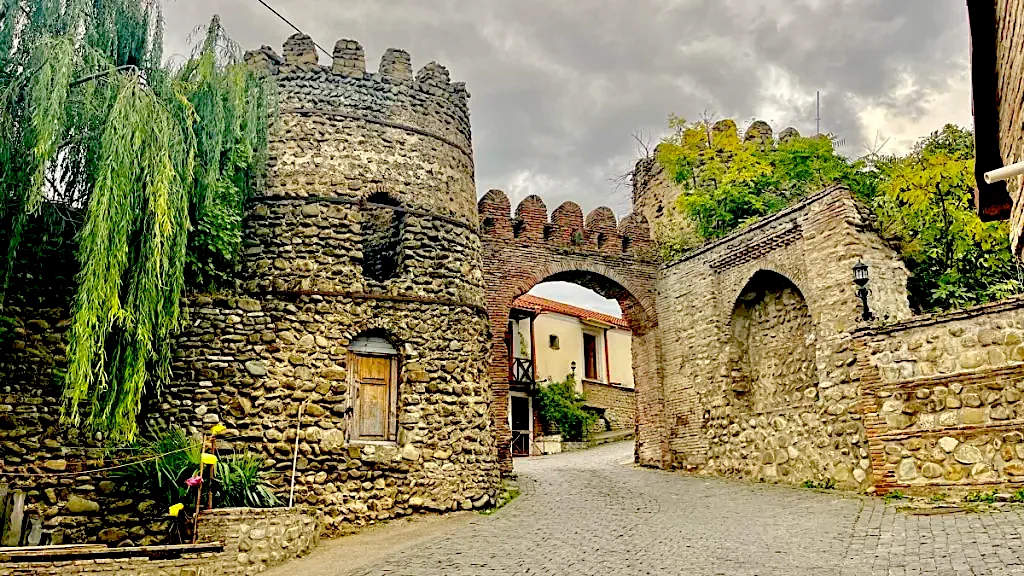
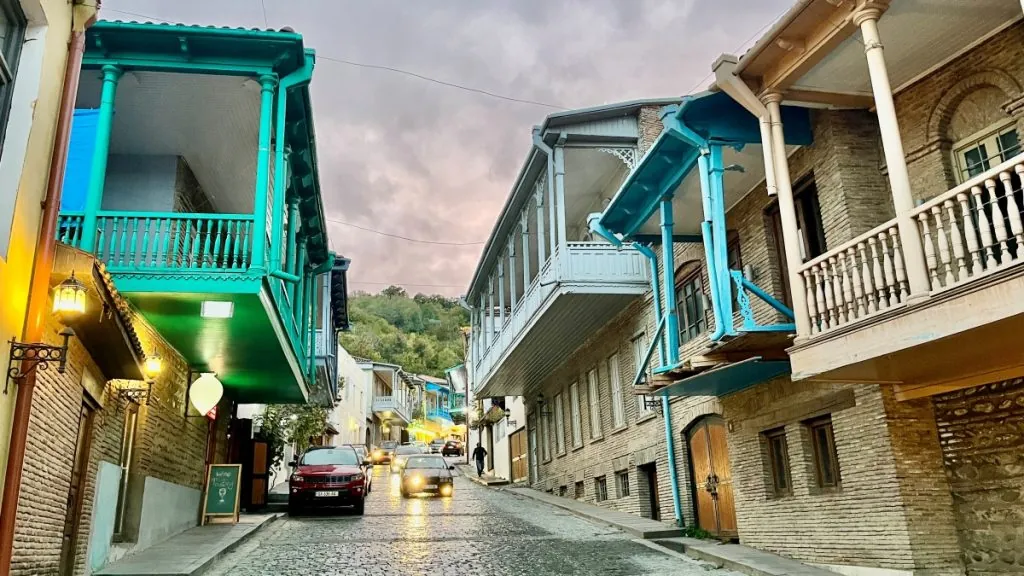
14. Georgia has 4 UNESCO World Heritage Sites
Georgia has four UNESCO World Heritage Sites, one natural and three cultural.
- The UNESCO heritage site "Colchic Rainforests and Wetlands" contains four protected parks. Three of these parks - Mtirala National Park, Kobuleti protected area and Kintrishi protected area- is located in Adjara, with Batumi on the Black Sea as the starting point for them all.
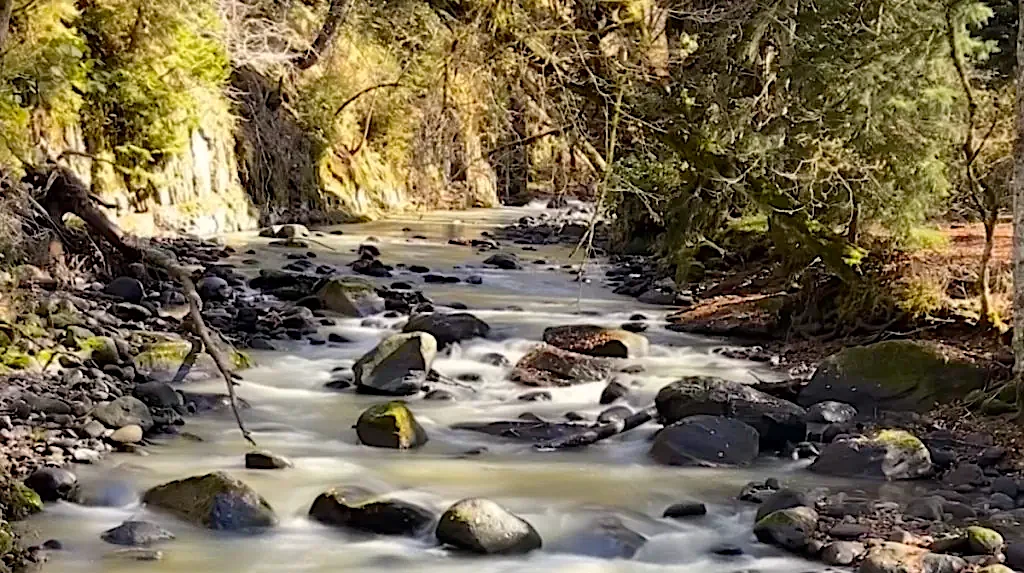
- Historical monuments in Mtscheta, with the Svetitskhoveli Cathedral.
- The impressive cathedral complex known as the Gelati Monastery.
- Upper Svaneti is protected by UNESCO.
In addition, Georgian folk dances are protected as Intangible World Heritage. The speciality of this dance - technique "topoint" dance on the toes in the thin leather boots!
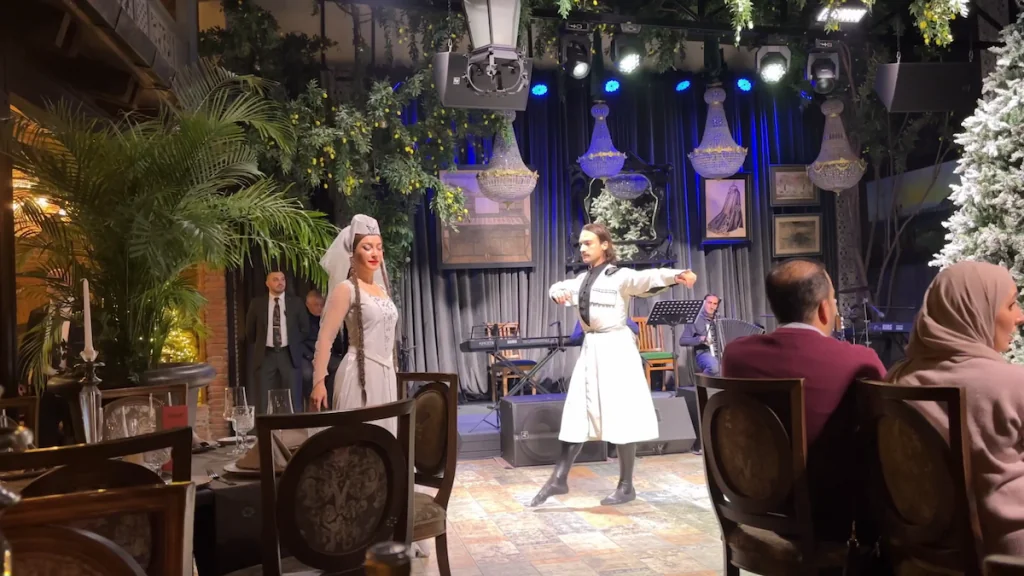
Facts about Georgia
15. Bordzjomi is a spa town with a large national park
The classic Bordzjomi health resorts is a peaceful oasis where life revolves around relaxation. Here you can stroll through lush parks, drink the mineral-rich spring water, swim in sulphur baths or enjoy spa treatments.
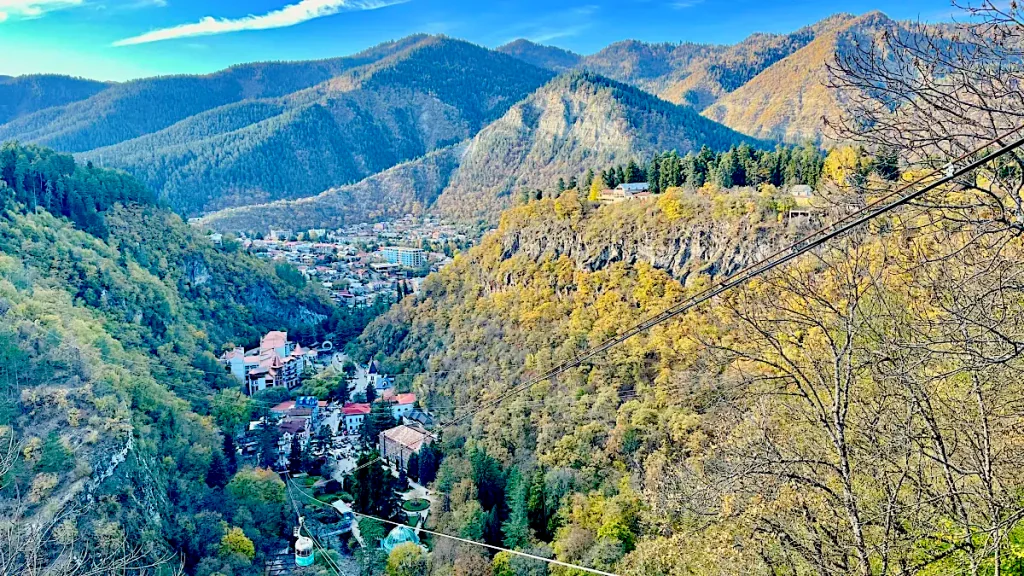
The construction of baths and buildings began in the 1830s, and thanks to its mild climate, healing springs and surrounding forests, Bordzjomi quickly became a popular holiday resort for the aristocracy. This legacy lives on today, reflected in the town's elegant villas and historic architecture.
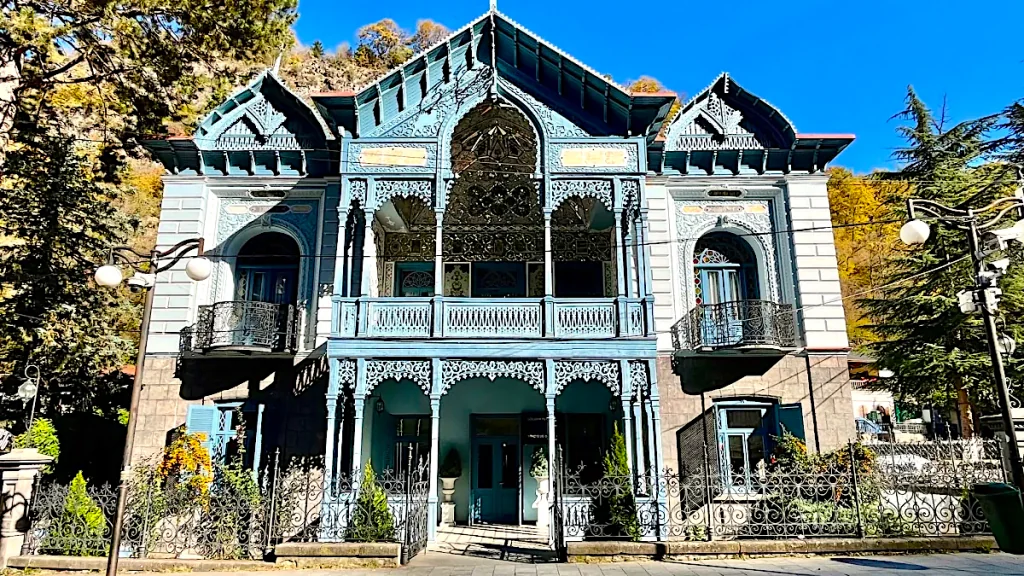
Just outside Bordzjomi, Borjomi-Kharagauli National Park spreads out - one of the largest in Georgia. It is rich in wildlife, with 64 species of mammals, 11 of which are unique to the Caucasus. In addition, the park is home to a whopping 217 bird species, making it a great place for nature lovers and birdwatchers.
16. Georgia is the cradle of wine with 8,000 years of history
Georgia is a unique country where wine culture has been closely intertwined with the traditions of its people for centuries. It was from Georgia that winemaking later travelled to Egypt and Greece. Many of the grape varieties grown in Europe and Asia are of Georgian origin, and even the word 'wine' itself comes from the Georgian word 'gvino'.
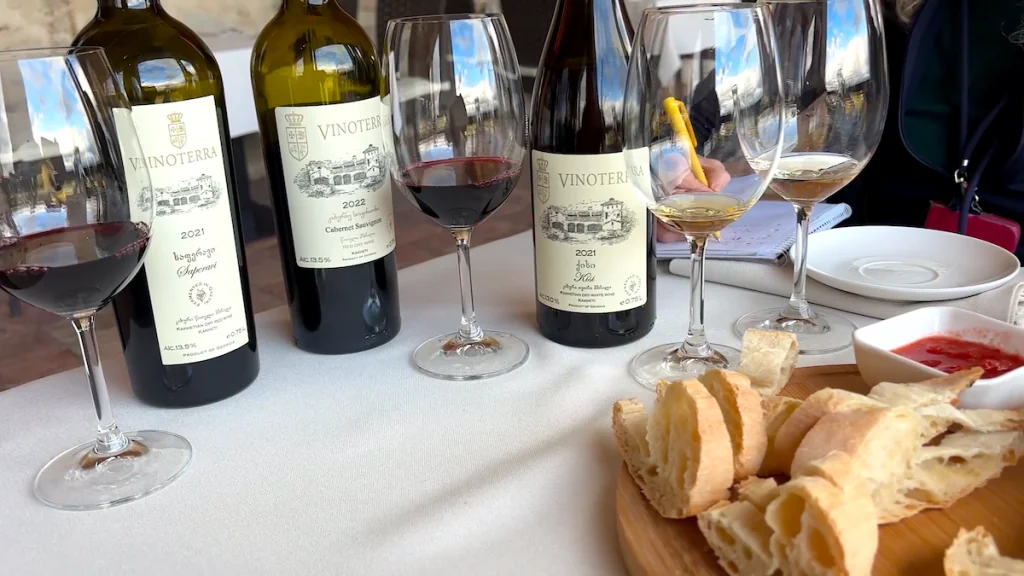
Over 8,000 years ago, ancient Georgians realised that if they hid their grapes underground during the winter, they would have something more potent than fruit juice to look forward to in the spring. This historic winemaking method, which is still used in modern-day Georgia, uses large clay vessels called qvevri (kvevri). The vats can hold up to 5000 litres each.
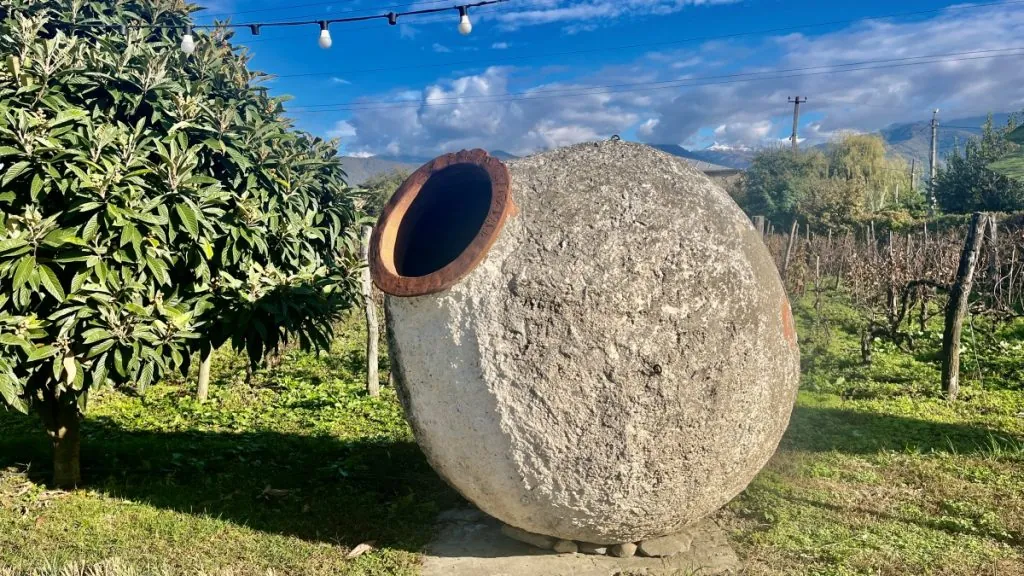
Winemakers load crushed grape must into these egg-shaped pots before burying them underground. The natural underground temperatures facilitate the fermentation process, which takes up to 6 months. The best place to experience Georgia's wine heritage is the area Kakhetia, with its main town being Telavi.
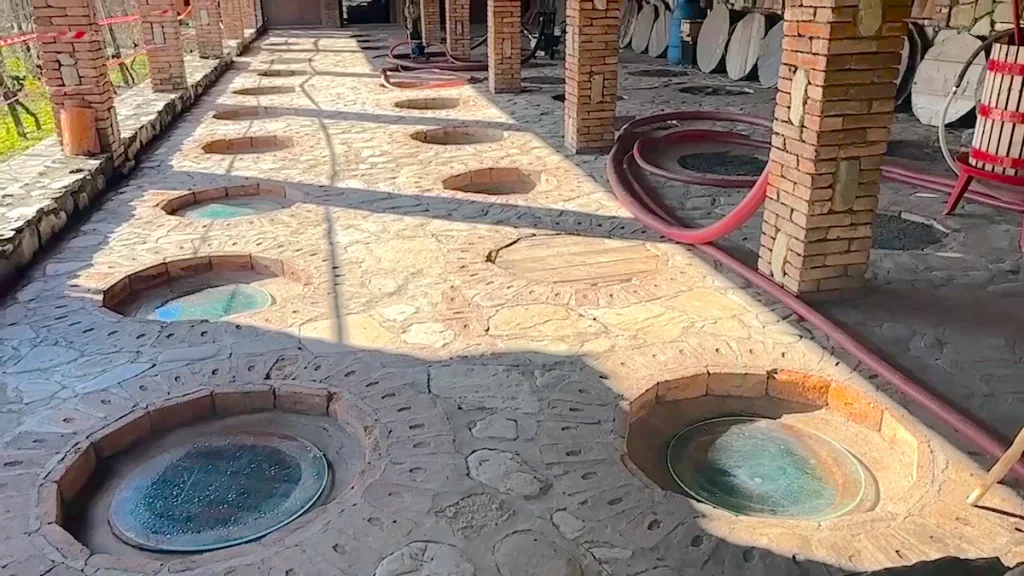
17. Georgia has many vineyards
Georgia has long been a land of winemakers and wine has always been at the centre of the Georgian economy. Today, Georgian winemakers continue to produce red, semi-red, white, pink, sparkling and amber wines using their traditional methods. The skins that have finished fermenting are also used to make the spirit drink chacha.
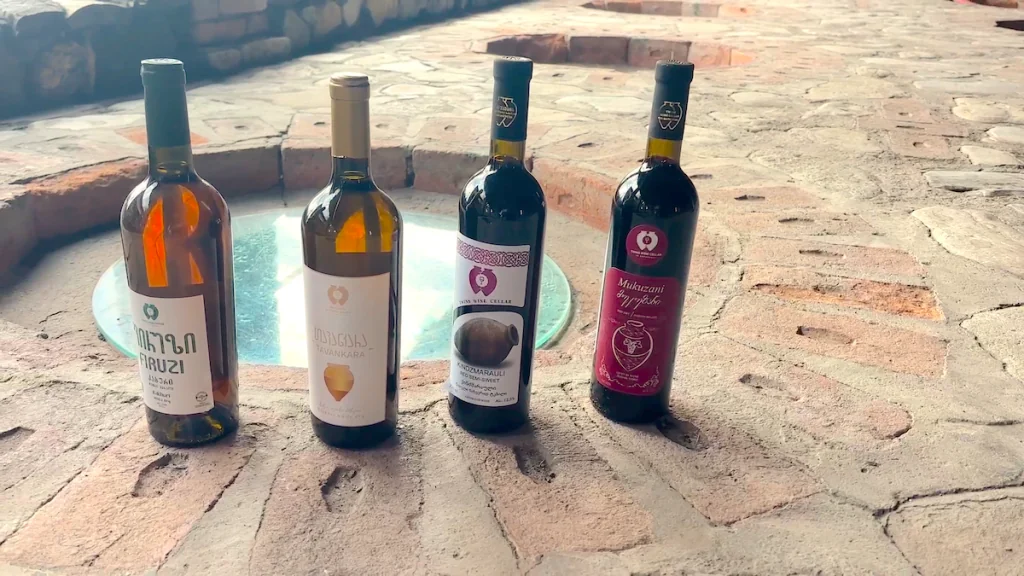
18. The food in Georgia is very good
There are lots of good food in Georgia. One of the most famous dishes is chinkali. These are dumplings with various fillings usually consisting of meat, cheese, potatoes or mushrooms with herbs.
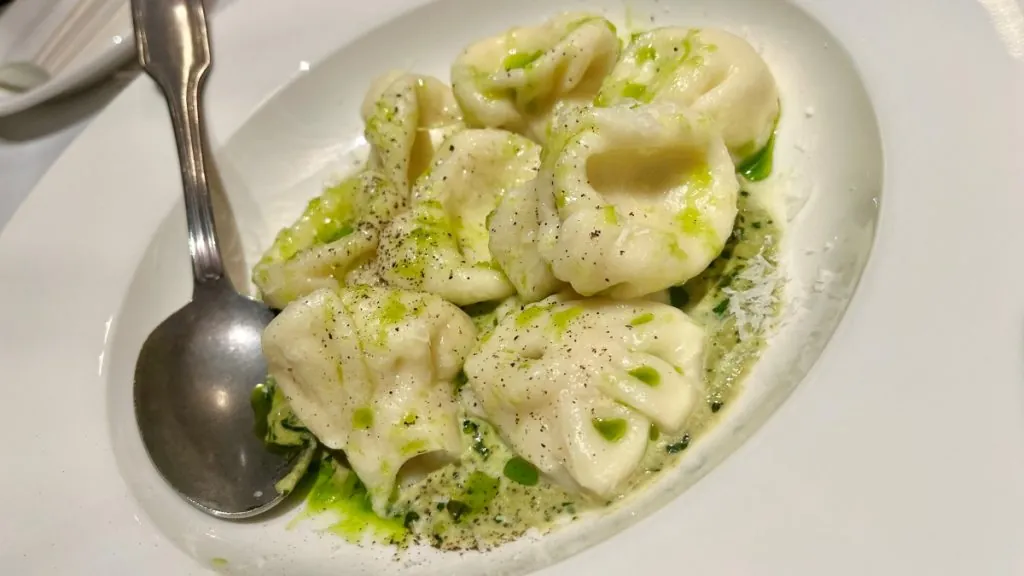
Another thing not to be missed is puri (bread) and chatjapuri (cheese bread). The most interesting thing to try is adzjarisk chatjapuri, made in the Adjara region. This cheese bread is shaped like a boat and is filled not only with cheese, but also with an egg. When you eat, you mix the cheese and egg with butter, and then you eat with your hands by breaking the bread.

Another dish to try is kharcho, a slow-cooked meat stew with tomatoes, ground walnuts, spices and aromatic herbs.
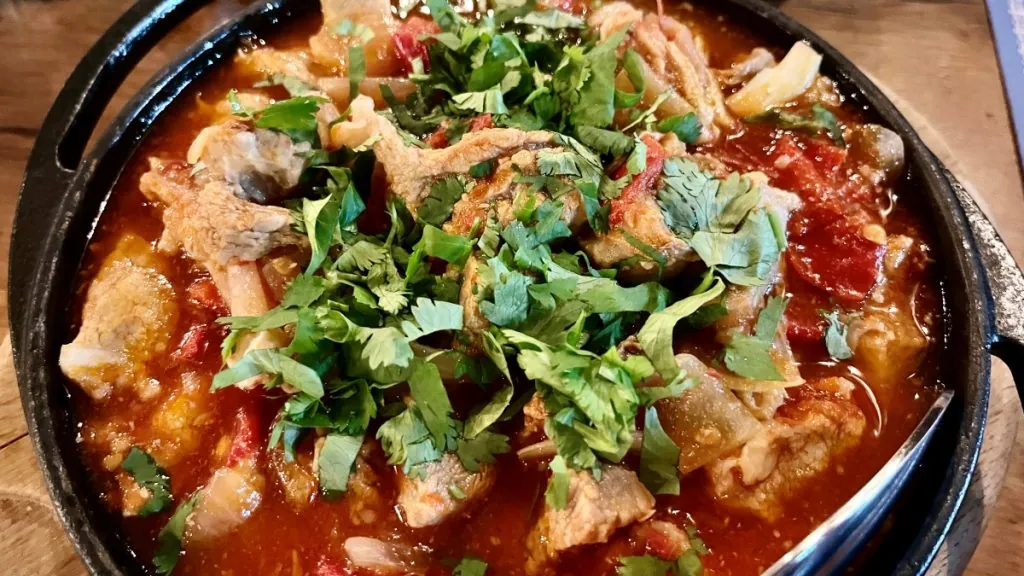
19. orange amber wine comes from Georgia
Winemaking is part of Georgia's national identity, and the country is particularly known for so-called 'amber wine', which can also be called 'orange wine'. The colour and full-bodied taste of this wine is due to the fact that the whole grape, skin and all, is used. Amber wine is still made in the traditional way, by storing it in terracotta urns called qvevri that are buried underground.
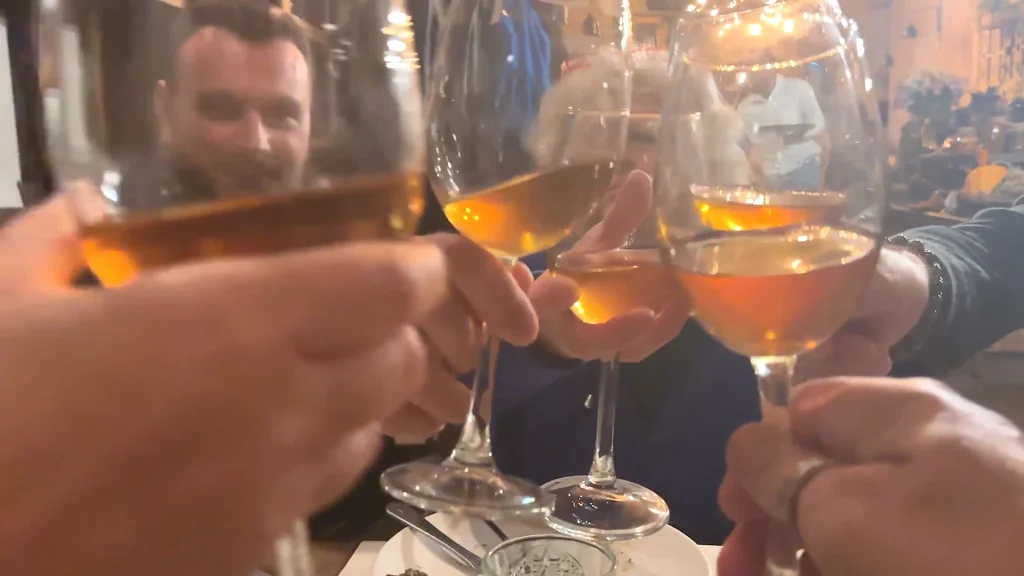
20. Georgians like to play Formula 1 drivers
These may not be 'facts about Georgia', but the driving culture in Georgia might be worth mentioning. We've driven in many challenging places in the world - such as Italy and Nairobi - but driving in Georgia takes it to a whole new level. Many people overtake at all times, even on bends with no visibility, so you have to watch out. But it is beautiful! Read more about driving in Georgia here.

21. The language of Georgia is unique
Georgia is a country of 3.8 million people with its own language. Georgian has its own 33-letter alphabet, believed to be based on the Aramaic spoken in the time of Jesus. The unique Georgian alphabet can be described as beautiful and winding.
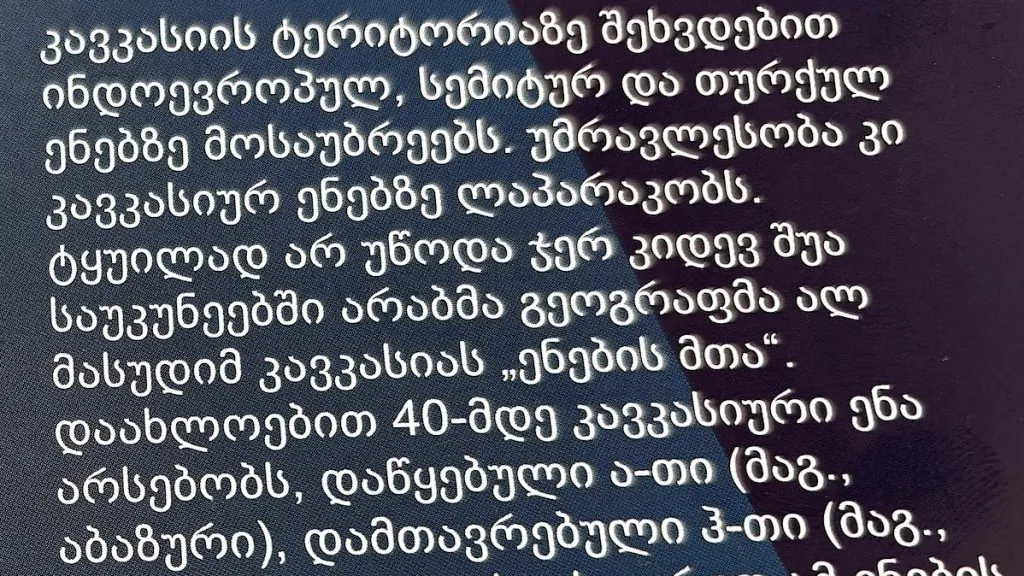
Compared to the Indo-Germanic languages with which we are often most familiar, the Georgian language has some peculiarities. For example, there are no upper or lower case letters. There are also no grammatical genders, such as masculine, feminine or neuter. Many consecutive consonants can be difficult for foreigners to pronounce, for example in the name of the Georgian city of Mtscheta.
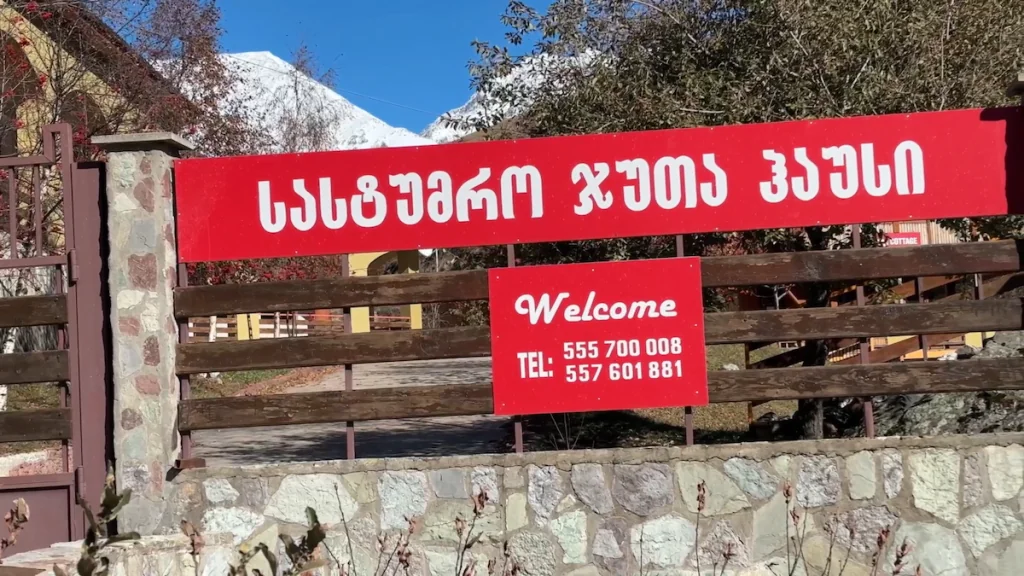
Facts about Georgia
22. Georgia has also been called the "Land of a thousand towers"
The Svaneti region is located in the north-west of Georgia. Throughout the area, the population has built medieval towers, like dwellings. Originally intended as defence towers for each family, you can find them in Mestia and Ushguli around the Caucasus mountain range.
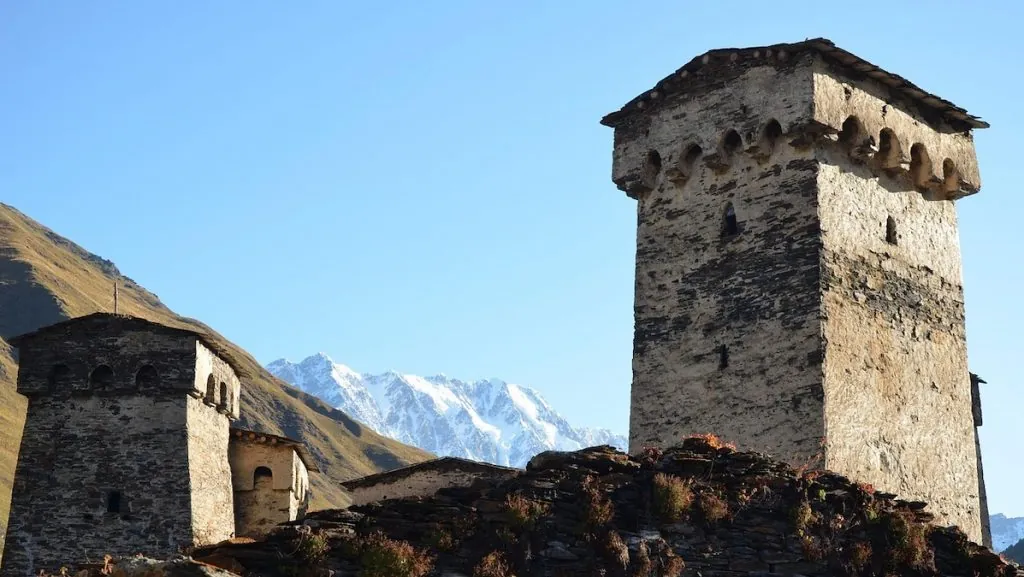
23. Joseph Stalin was born in Georgia
Soviet dictator Joseph Stalin was actually born as Iosif Vissarionovich Dzhugashvili, in the Georgian town of Gori. Today you can see the house where Stalin spent his early years, and nearby you can visit the Stalin Museum.
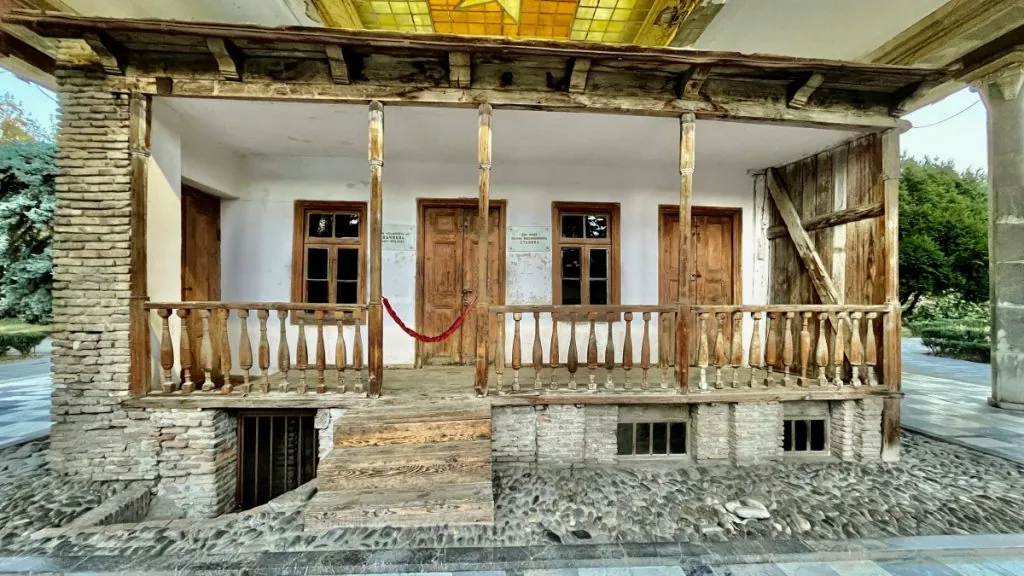
After independence, many Stalin statues were demolished, but several statues remain. While Stalin is often seen as a tyrant who carried out brutal purges, he is also seen as a great historical figure. When you visit the museum, you can also check out Stalin's bulletproof train carriage, which he used to travel around the world.
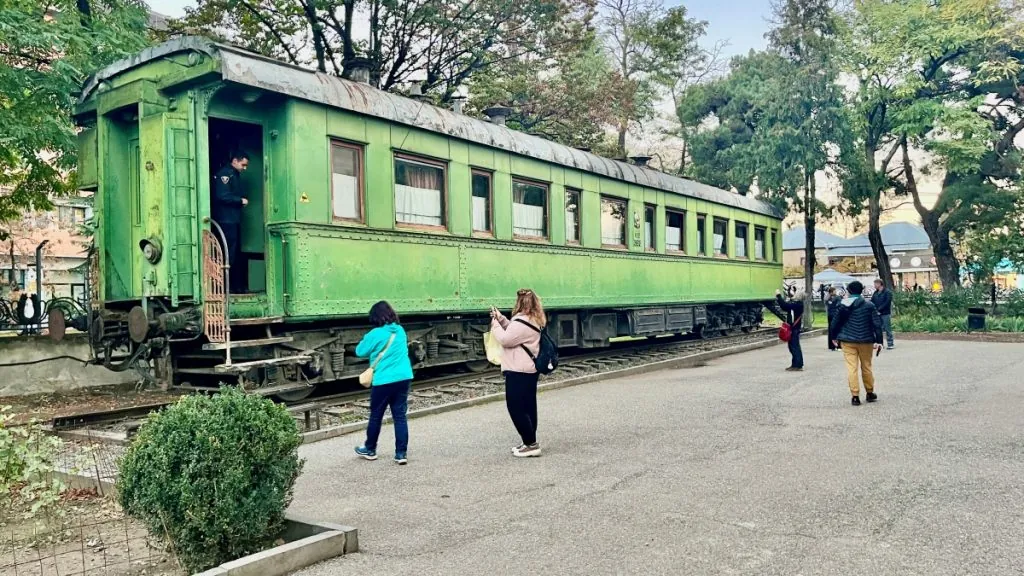
24. The Nobel brothers have their own museum in Georgia
I Batumi on the Black Sea you will find the museum with the intriguing name Nobel Brothers Batumi Technological Museum, which has a special connection to us Swedes. Ludvig and Robert Nobel were brothers of the more famous Alfred Nobel and together they founded the Russian oil company Branobel. Robert Nobel accidentally discovered oil in Baku, in present-day Azerbaijan, which laid the foundation for a successful oil industry.
The oil was first transported by train to the ports of Batumi, but after some time the brothers came up with the idea of transporting the oil by an 835-kilometre pipeline, to specially built boats in the Black Sea.
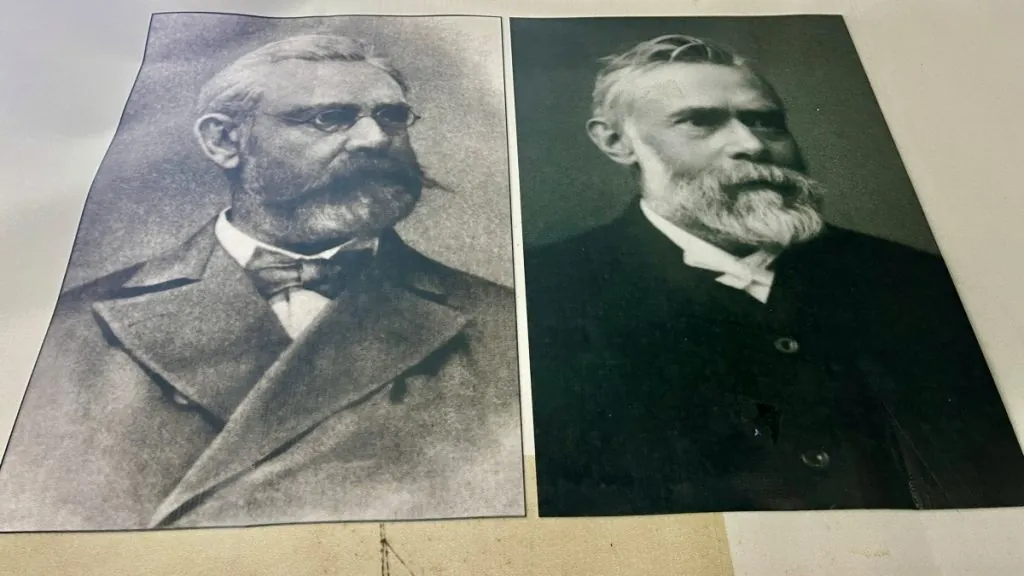
25. Georgians call their country Sakartvelo
Georgians call their country Sakartvelo. The origins of the country's name in English are unclear. One theory points to the Middle Ages when Christian crusaders swept through the region on their way to the Holy Land. At the time, it was part of the Persian Empire and the people here were known as 'Gurj'. They were also followers of St George. The theory goes that the crusaders made the connection and named the land Georgia.
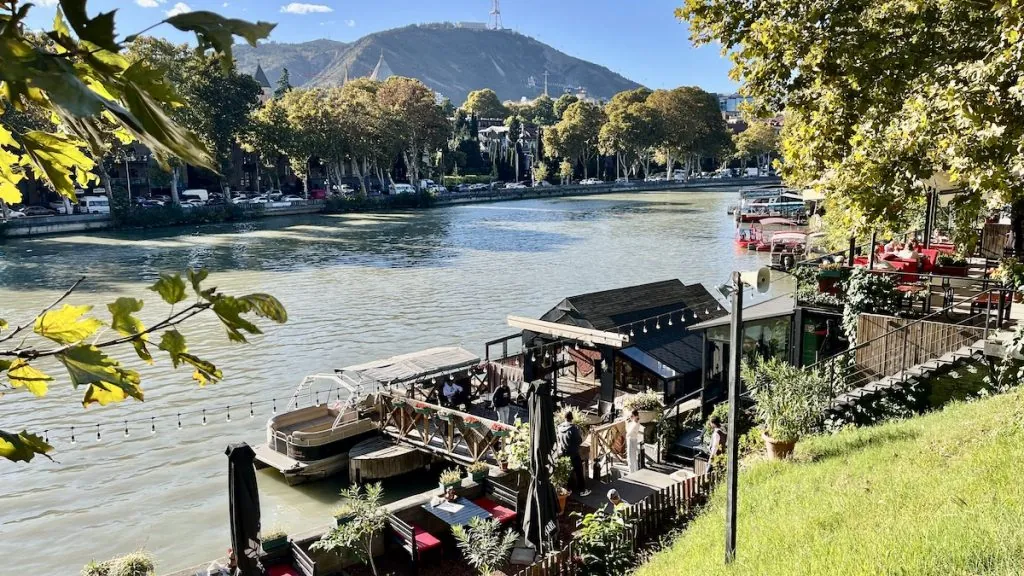
A golden statue of the saint slaying a dragon dominates Tbilisi's central square. He is also the patron saint of Georgia and the national flag with his red cross on a white background is everywhere.
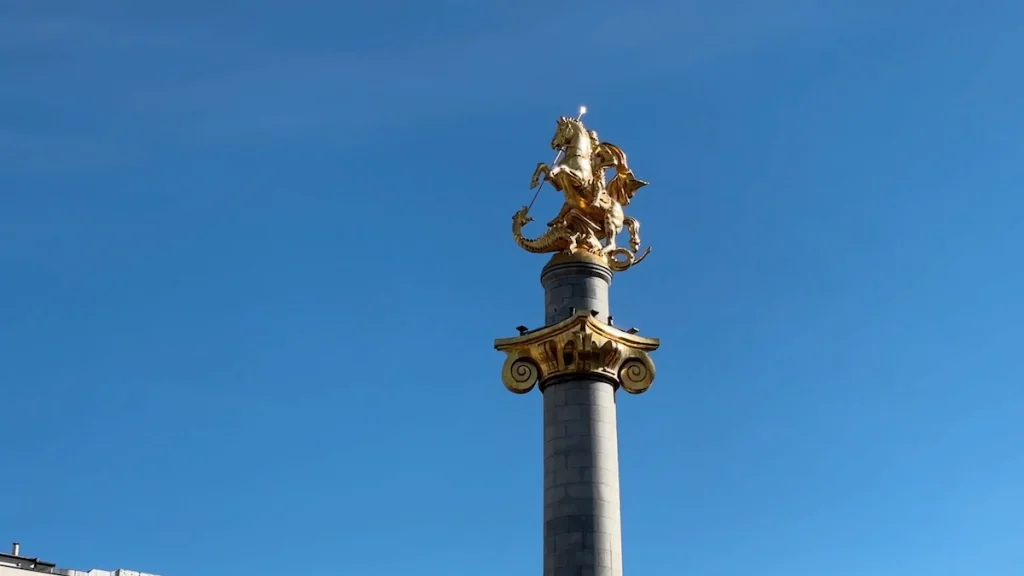
26. Religon is bigger than biggest in Georgia
While many European nations have seen religious gatherings decline in recent decades, the Orthodox Church in Georgia is thriving. Over 80 per cent of Georgians say they belong to the church and its head, Patriarch Ilia II, is by far the most respected public figure.
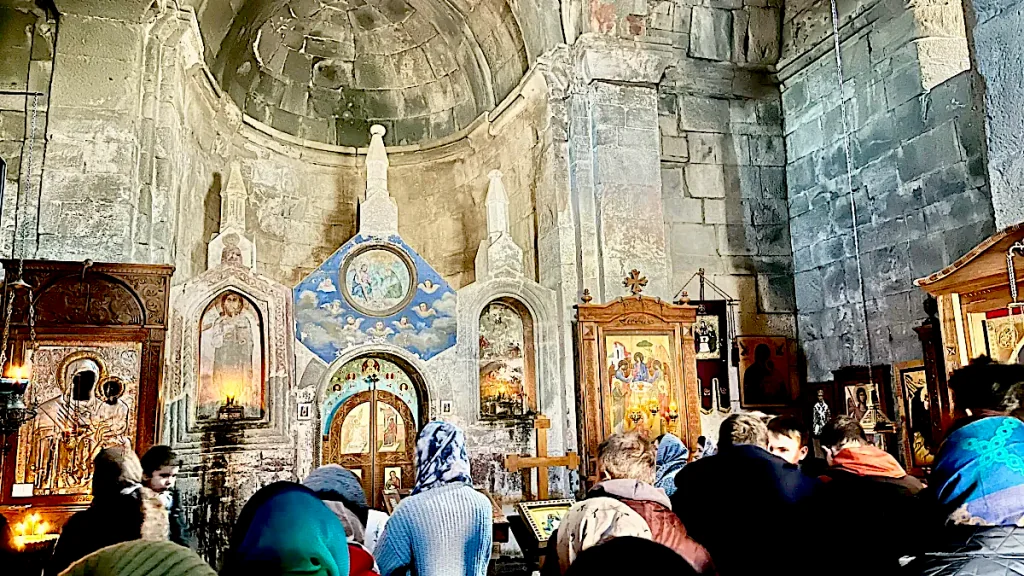
27. Georgians love to host a guest
In Georgia, they consider a guest to be a gift from God. They love to party and it is not unusual to have over a hundred guests. When holding a 'supra' (a traditional Georgian feast), guests are welcomed with open arms and the 'tamade' (a toastmaster) makes sure you are well entertained.
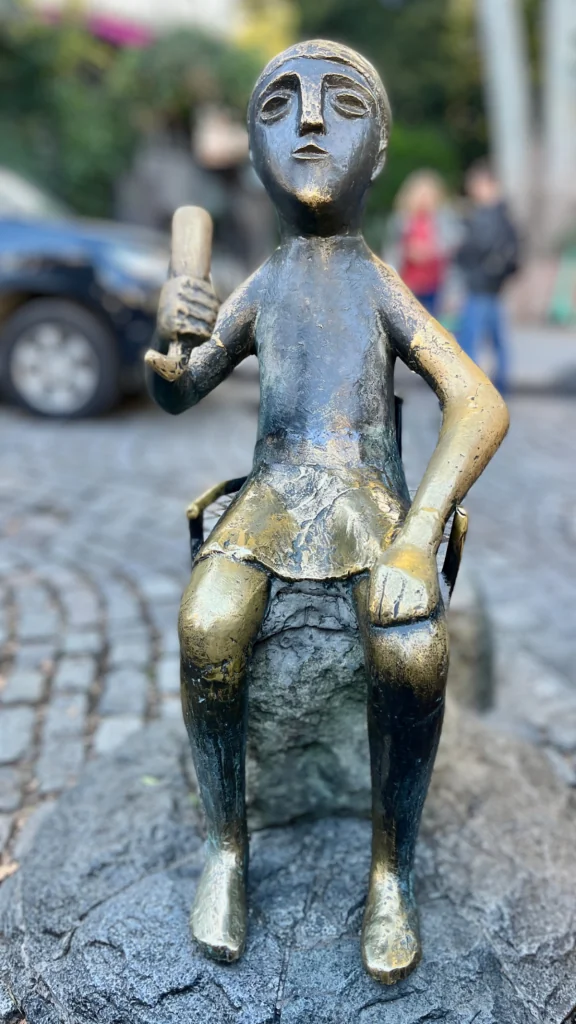
28. You can swim in a sulphur bath in Tblisi
The thermal water under the city streets is the reason why Tbilisi exists. According to legend, King Vachtang Gorgasali, in the 4th century, decided to build his capital here after shooting a bird during a hunt, which landed in a hot spring. Today, the bulk of the underground baths can be found in the Abanotubani district, an area recognised by its unique brick domes and pervasive sulphurous scent.
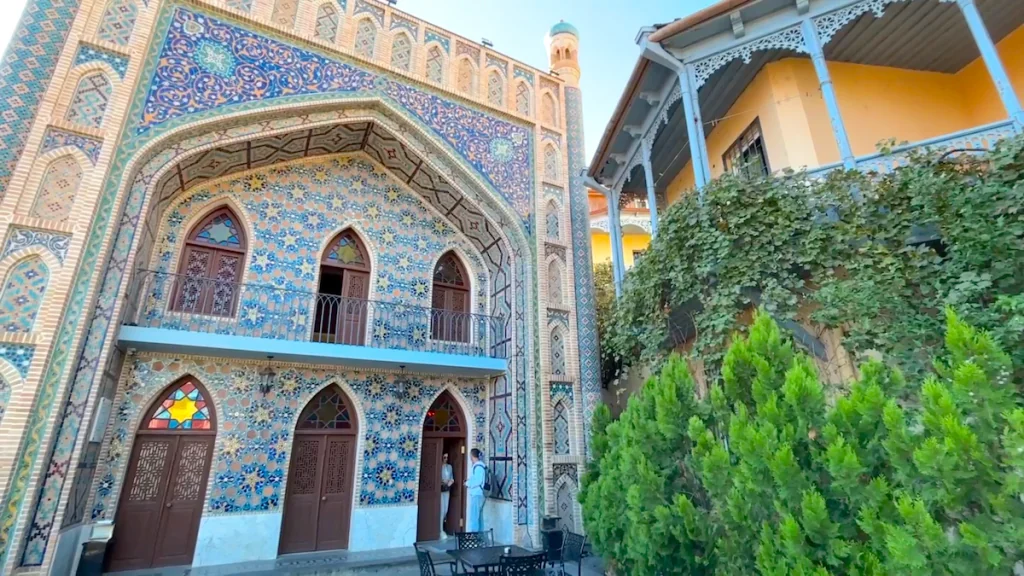
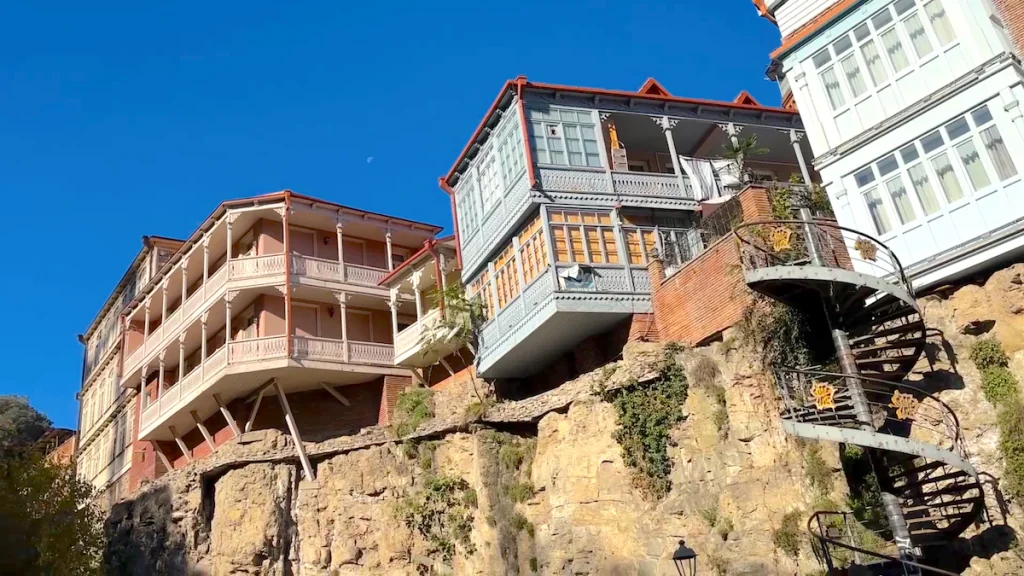
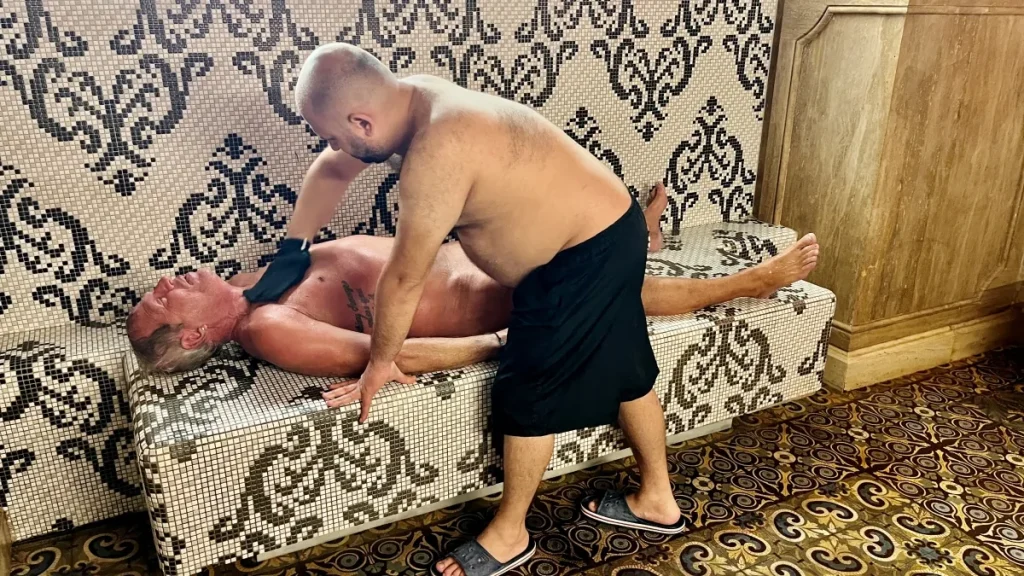
Facts about Georgia
29. In batumi you will find palm trees and skyscrapers
Batumi is the capital of the Autonomous Republic of Adjara, part of Georgia, on the Black Sea. It is the second largest city after the capital, Tbilisi, and an important port city. Georgians come here on holiday and it's easy to see why. Here you'll find a subtropical climate and a mix of large green parks, historic buildings, palm trees, beaches and skyscrapers.
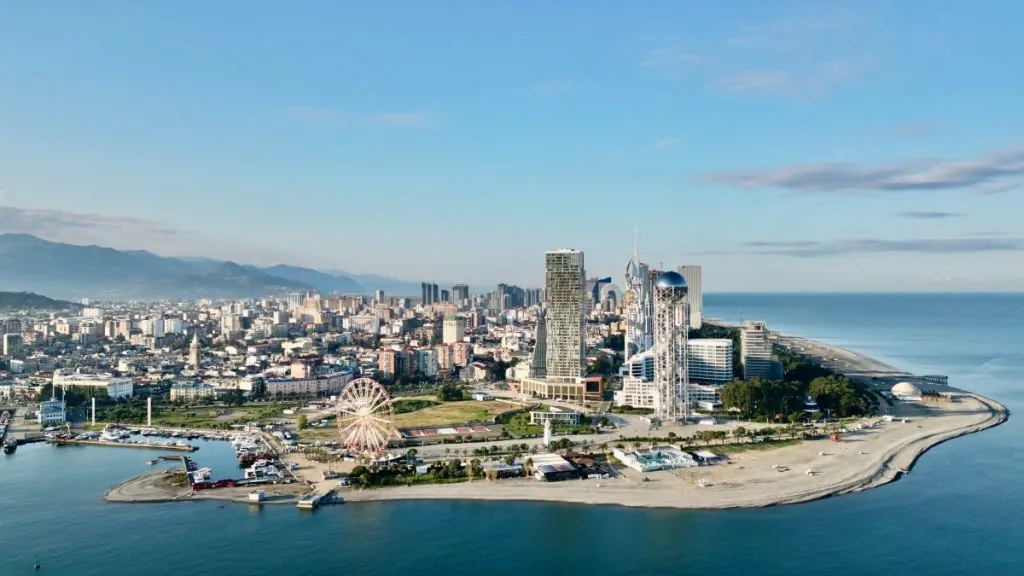
Batumi Boulevard is 7 km long and runs along the entire coast with beautiful sculptures, Japanese garden, huge parks, kiosks, restaurants, special buildings and a marina.
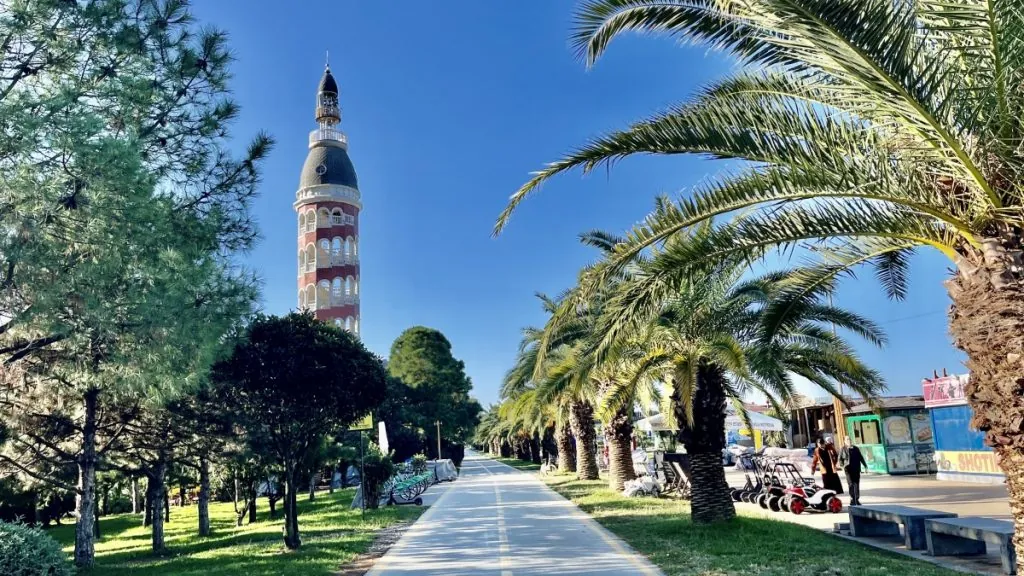
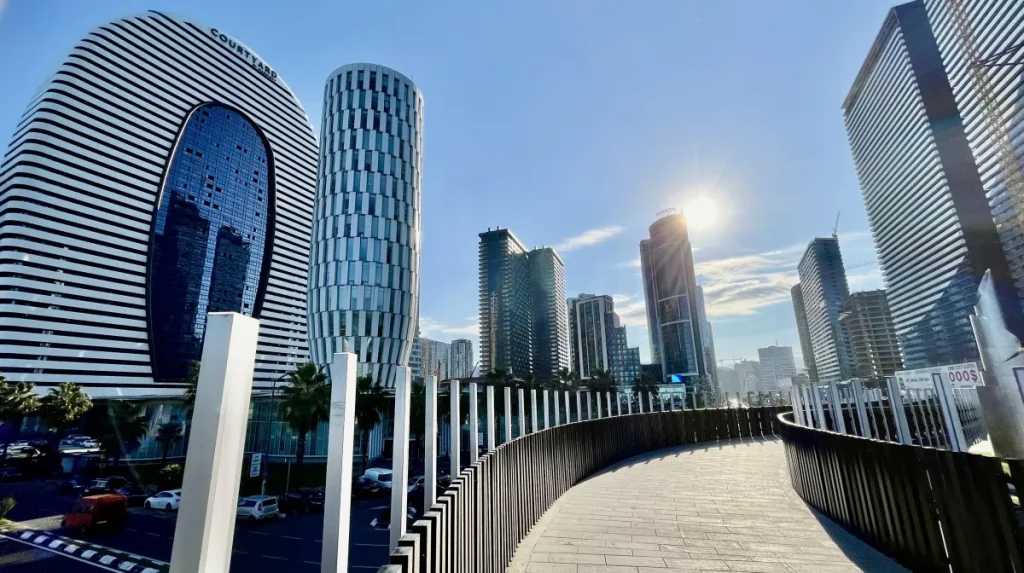
In Miracle Park you will find the 8 metre high sculpture "Ali & Nino", representing a woman and a man. It moves slowly and every 10 minutes they meet and pass through each other - a symbol of love regardless of nationality and religion, between the Muslim Ali and the Christian woman Nino.
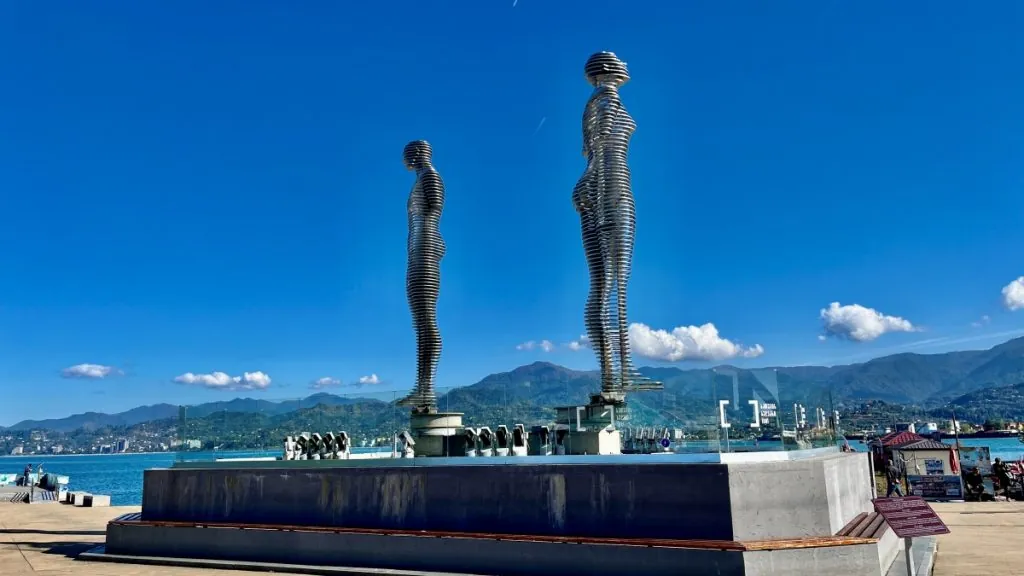
In Batumi you will also find the Old Town, the Turkish Quarter, Batumi Piazza and the grand Europe Square, with the statue of Medea, symbolising the ancient kingdom of Colchis.
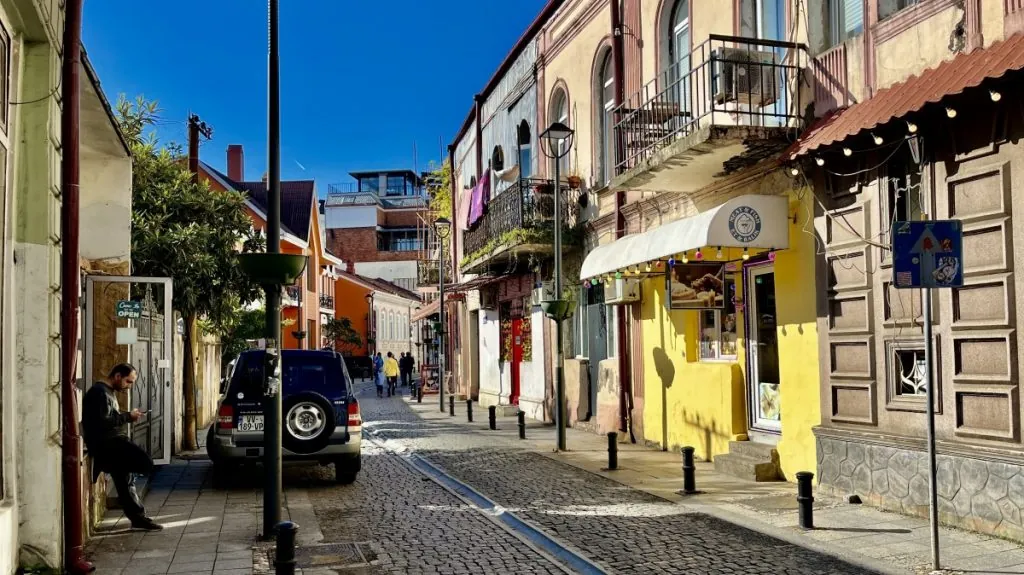
On the outskirts of Batumi you will find a large and beautiful botanical garden overlooking the Black Sea, with flowers and trees from all over the world.
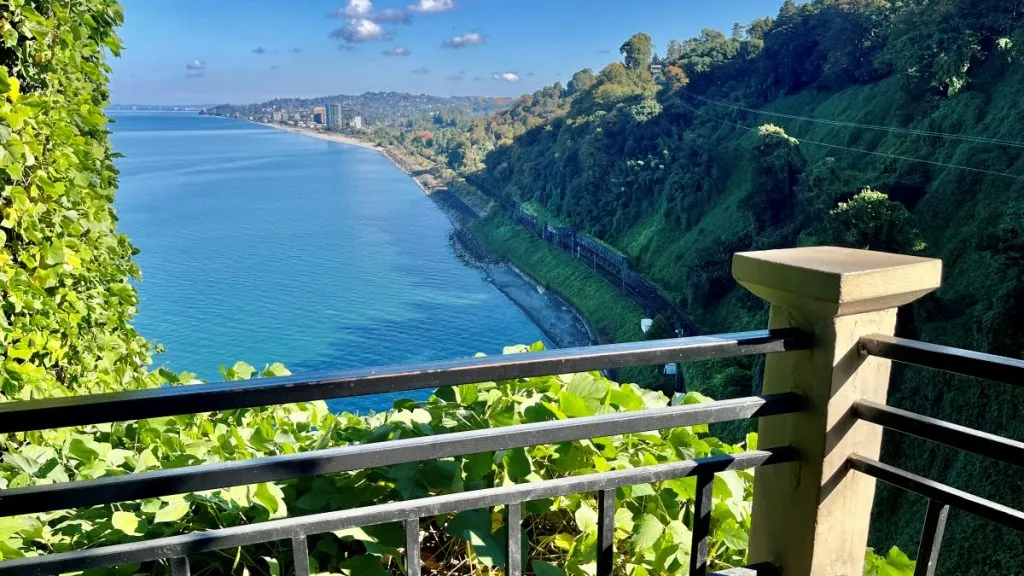
30. in the Caucasus is the "Georgia Military road"
"The Georgian Military Road is an incredibly dramatic and beautiful road. This road stretches from the capital Tbilisi, in the direction of Kazbegi (Stepantsminda). However, the pictures you usually see are mostly from the northernmost part of the road, between Ananuri and Kazbegi.
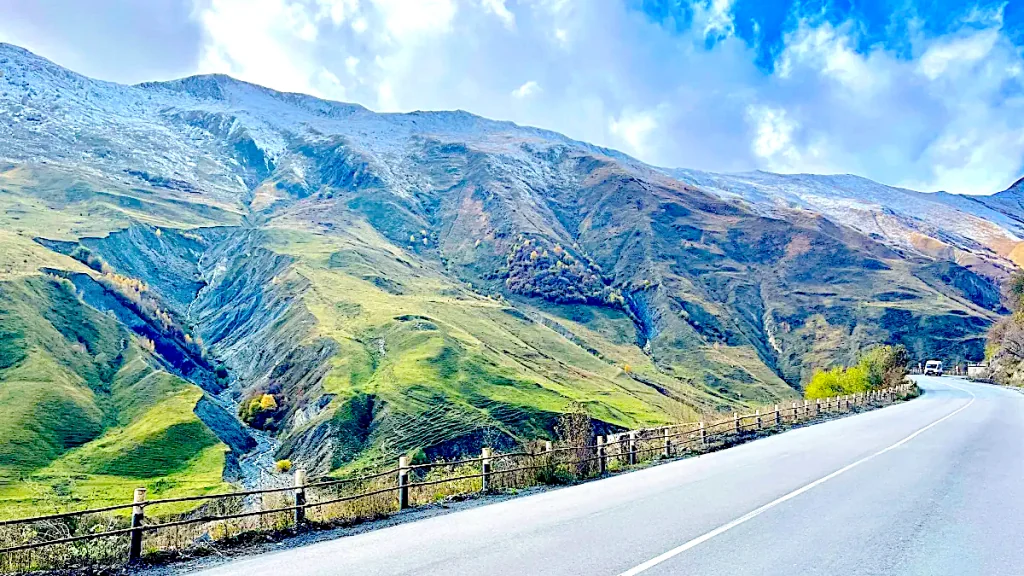
Slowly along the road it goes higher and higher up and you start to see snow-capped mountains. On the Georgian Military Road you pass the ski resort of Gudauri and after that the Georgia-Russia Friendship Monument, which is a mighty monument among the mountains.
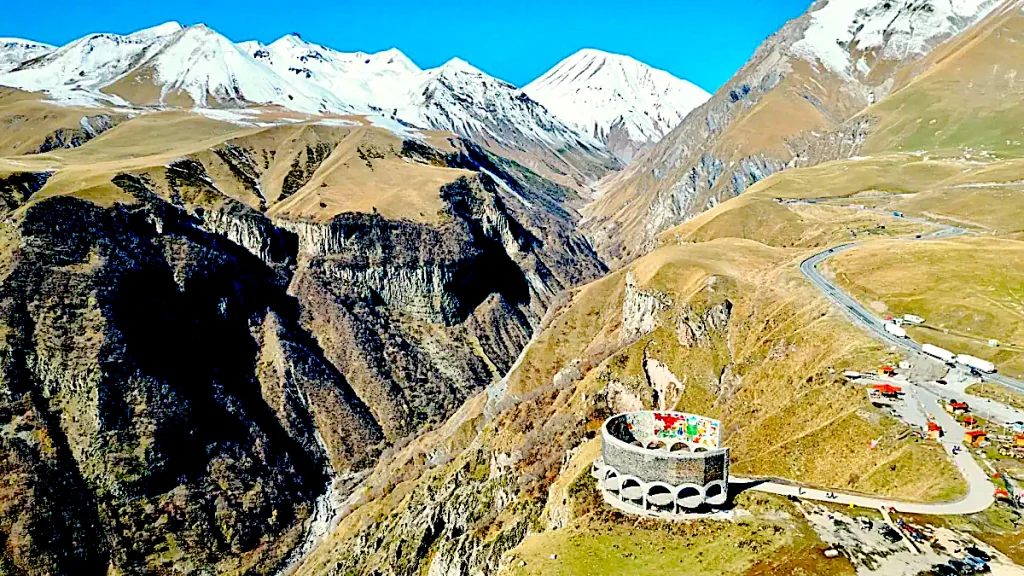
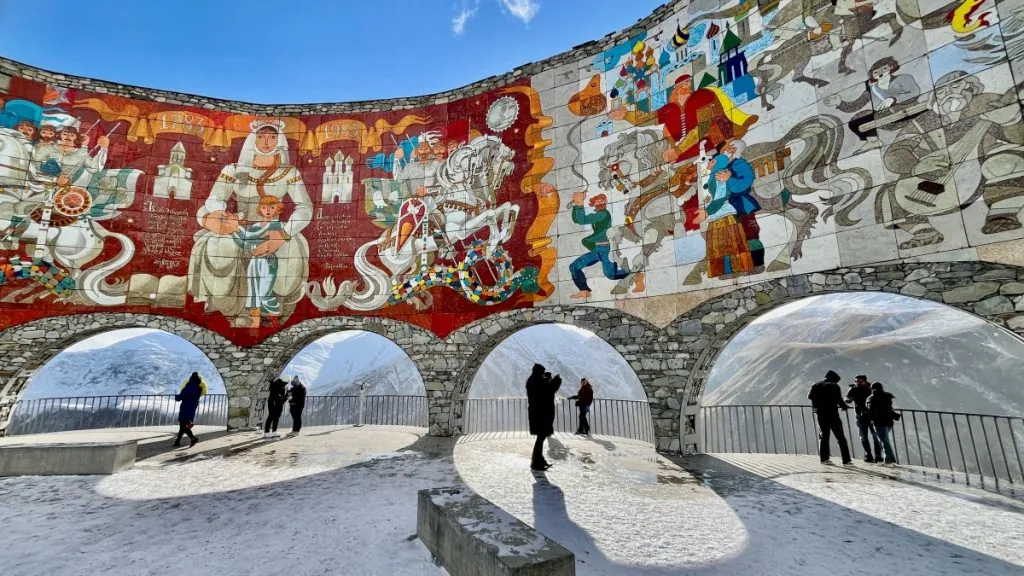


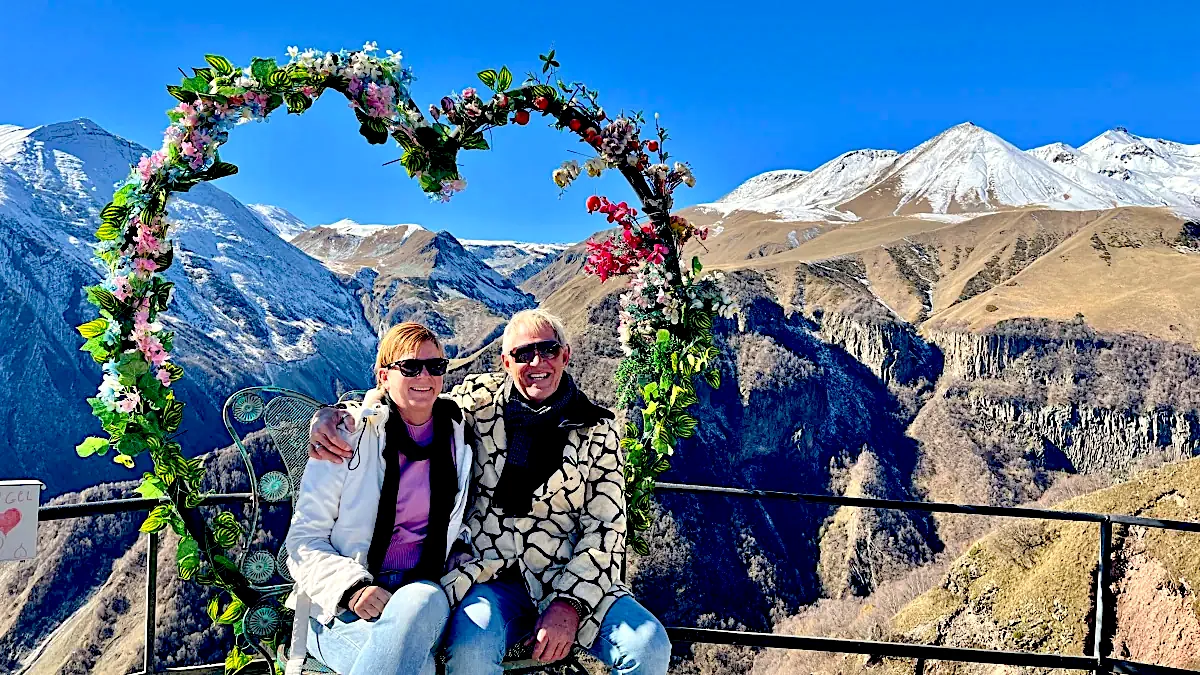






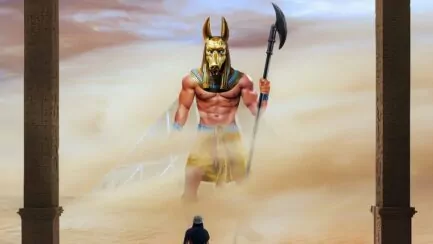
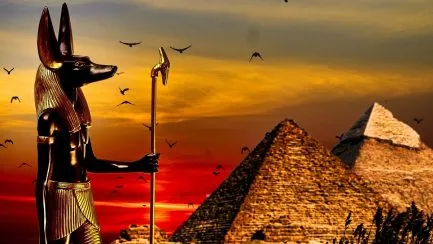
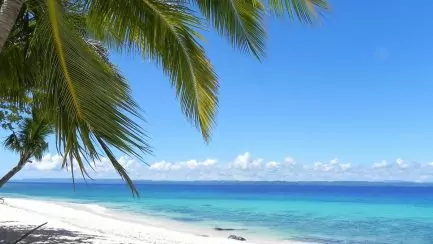
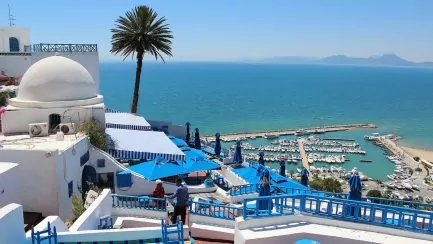

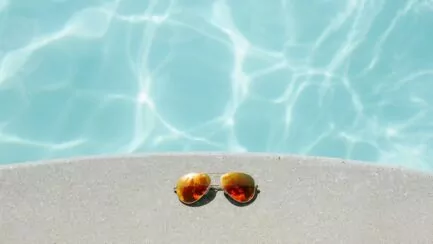
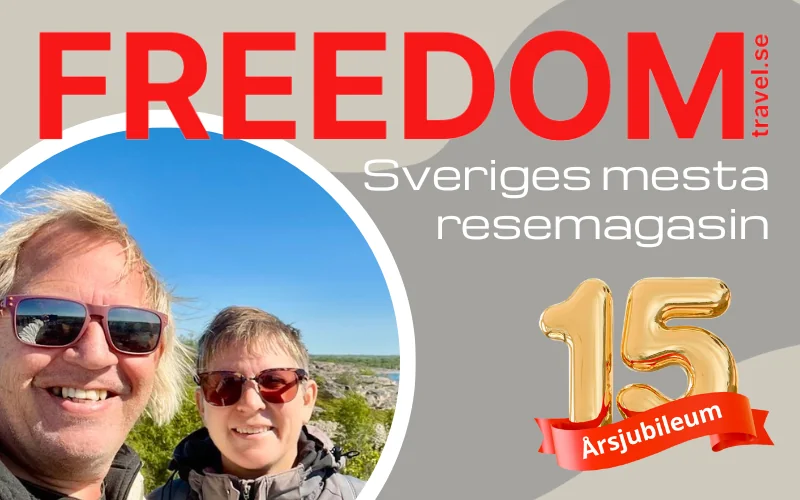
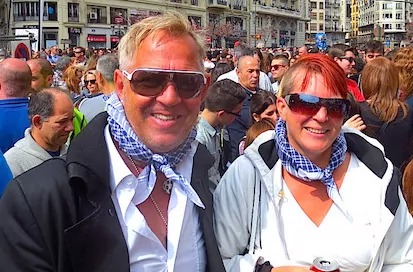

Netti Starby says:
Interesting facts about Georgia and I imagine their food is very tasty. Hugs <3
19 February 2025 - 6:19
Helena says:
Yes, very good food! 🙂
20 February 2025 - 6:17
Sara in Barcelona says:
Gomorron!
Thanks for so much interesting info about Georgia!
Truly a country of varied landscapes and stunningly beautiful nature <3
Also interesting that they have such a strong wine culture, I try to remember if I have tried a wine from there, worked at Systembolaget for a while when I lived in Sweden and then you got to try some 🙂 The orange wine reminds me a bit of Pet nat (natural wines) maybe counts to it?
Great fun to be involved!
Big hugs and have a great day!
19 February 2025 - 10:14
Helena says:
There is Georgian wine at Systembolaget, but the selection is limited. Interesting about Pet nat, I hadn't looked into it... googled a bit quickly now and that sounds interesting too! It seems to be an old method too, but I don't think it's the same.
20 February 2025 - 6:20
Roses and ruins says:
Wow, so many useful facts about Georgia, sounds like an interesting country with lots to see!
Have fun!
Gunilla
19 February 2025 - 16:58
Helena says:
An amazing country! 🙂
20 February 2025 - 6:20
Monnah says:
I have to come back to this post. I have never felt the urge to go to Georgia, but now my interest is piqued! Lovely pictures and a desire to go there myself is definitely awakened. Thank you very much!
19 February 2025 - 19:45
Helena says:
Georgia is an interesting and exciting country, with a lot of culture and history, and also amazing nature! 🙂
20 February 2025 - 6:21
Jonathan says:
These were good facts for me before my ski trip
To Georgia and Gudauri ! Will be very exciting to ski there but will also research more into their wines and history ! Gudauri is apparently very popular in the region and many people travelling there from other countries so is a great ski resort. Was quite surprised when I read that Apollo started skiing holidays there.
19 February 2025 - 22:20
Helena says:
So incredibly fun that you are going to Georgia on a ski trip! It was a surprise to us too that Apollo has ski trips there, but really fun! Looking forward to hearing about your trip a little later!
20 February 2025 - 6:22
Anita says:
Very interesting information about Georgia which I must admit I knew very little about. A very good summary that arouses interest in this beautiful and interesting country.
20 February 2025 - 8:11
The Adventure of the Future says:
I remember Tblisi best from the geography of Georgia and my school days...Caucasus too but more than this and I did not know that Stalin was born there. Now I am much wiser. Thanks for an incredibly nice post. I will take this again, read properly, look at all the nice photographs and look at you in the heart One...great post!
20 February 2025 - 14:02